Review AMD Ryzen 9 3900X, Ryzen 7 3700X and Ryzen 5 3600 – The day of one of the most anticipated releases of this second half of the year, AMD Matisse or also AMD 3000 series or Zen 2, arrived, without a doubt whatever the name by which you knew of this release the important thing is that the first processors manufactured in 7nm would already be part of the market, and what better day than 7/7. Will they live up to it? Let’s see!
This new generation of Ryzen processors, not only comes manufactured to smaller size (7nm vs 12nm), but also, the change comes in the way of designing these in such a way, that more cores can be incorporated without increasing the size of the die, which would result in a more expensive process and more likely to fail.
That is why they opted for the chiplet model, that is, each specialized unit is in a piece of silicon independent of the other, in this way “it is enough” to add another chip and the cores are increased, or more are added features.
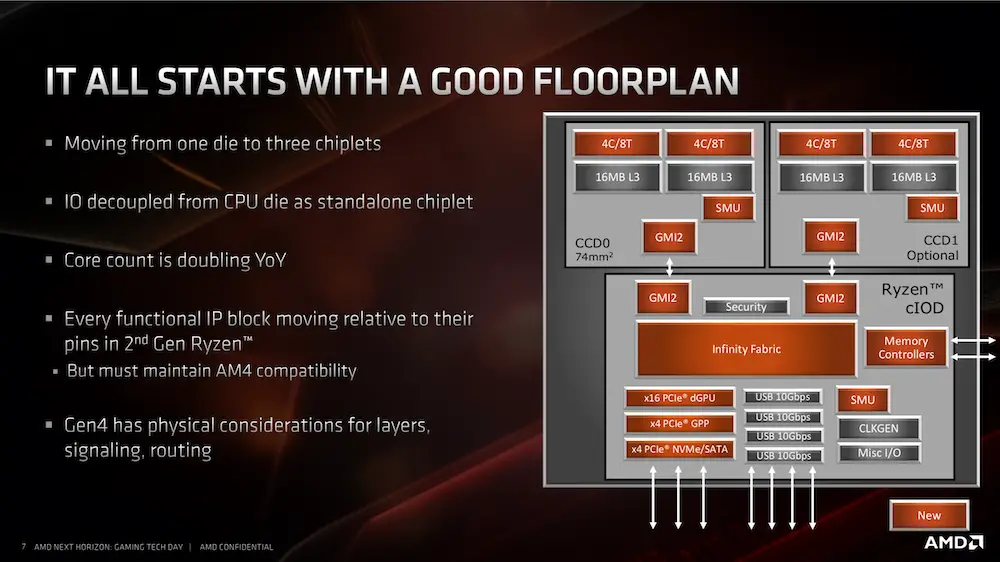
In this way the CPU is modularized, and we saw this with Ryzen Threadripper and Epyc processors for servers, all using the high-speed road called Infinity Fabric 2.0, which will communicate both CCD units through the cIOD.
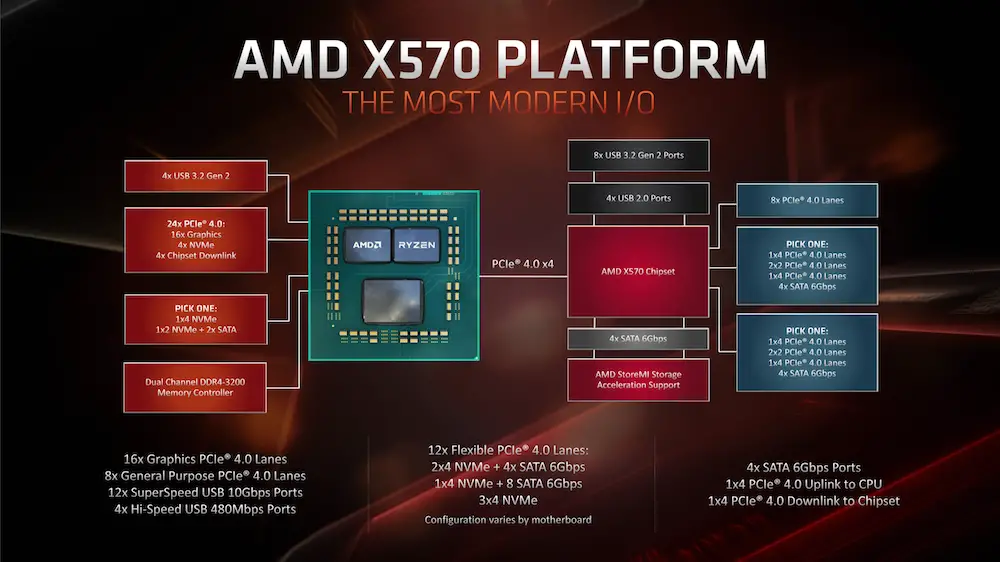
With these new processors, and the new support for PCIe 4.0, it was necessary to update the chipset. For this, the new X570 appears, which grants more SATA and NVMe ports, all through the PCIe 4.0 interface, in addition to 10Gbps USB ports (USB 3.2 Gen2). Obviously the communication with the CPU continues through a PCIe 4.0 x4 link.
Everything is in the routing
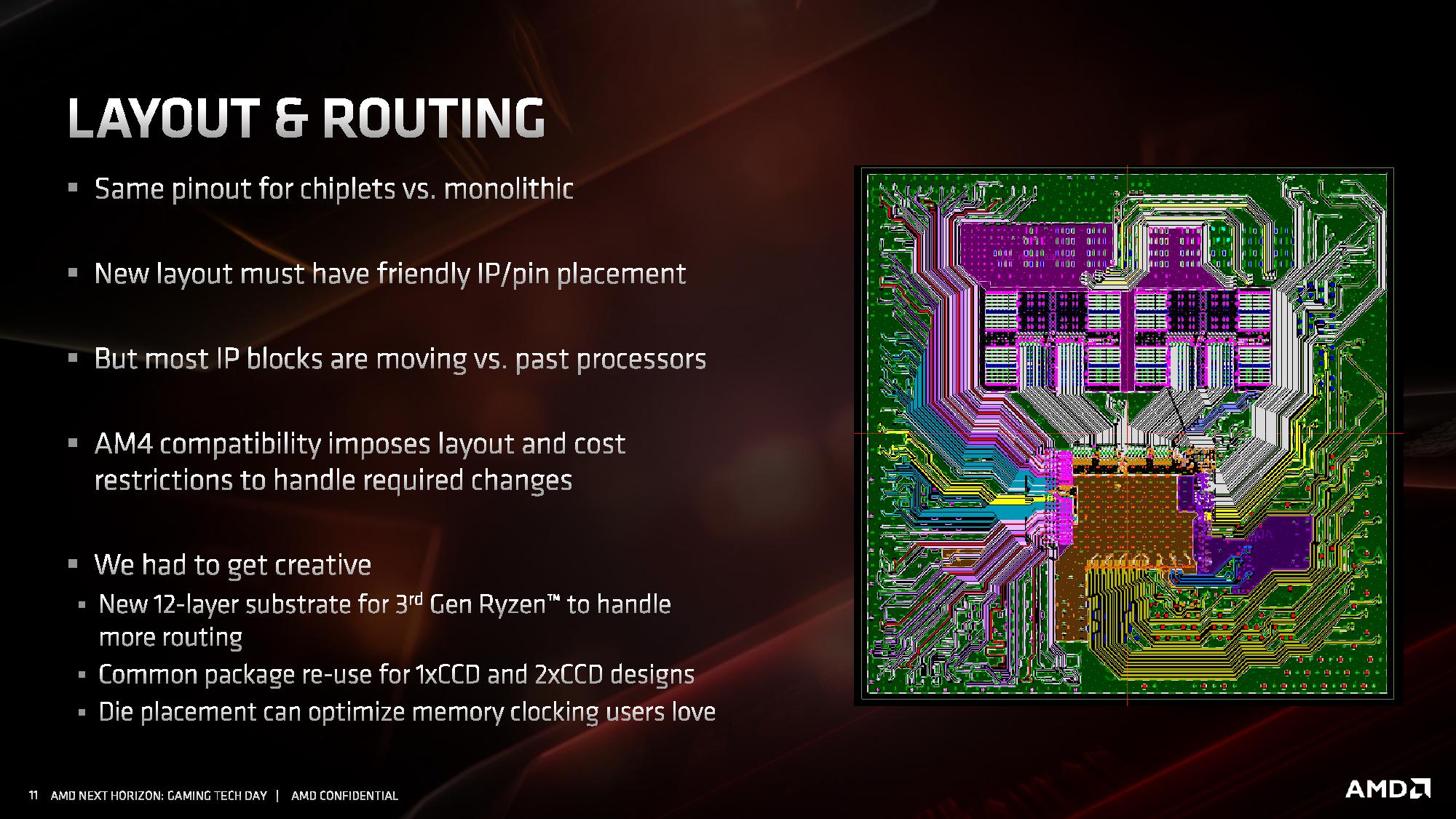
In order to communicate between the cores, all the routing of tracks passes through the IO die, who is finally in charge of communicating the CCDs with each other, and the CPU with the memories and the other components. In order to achieve this, the amount of substrate layers had to be increased to 12.
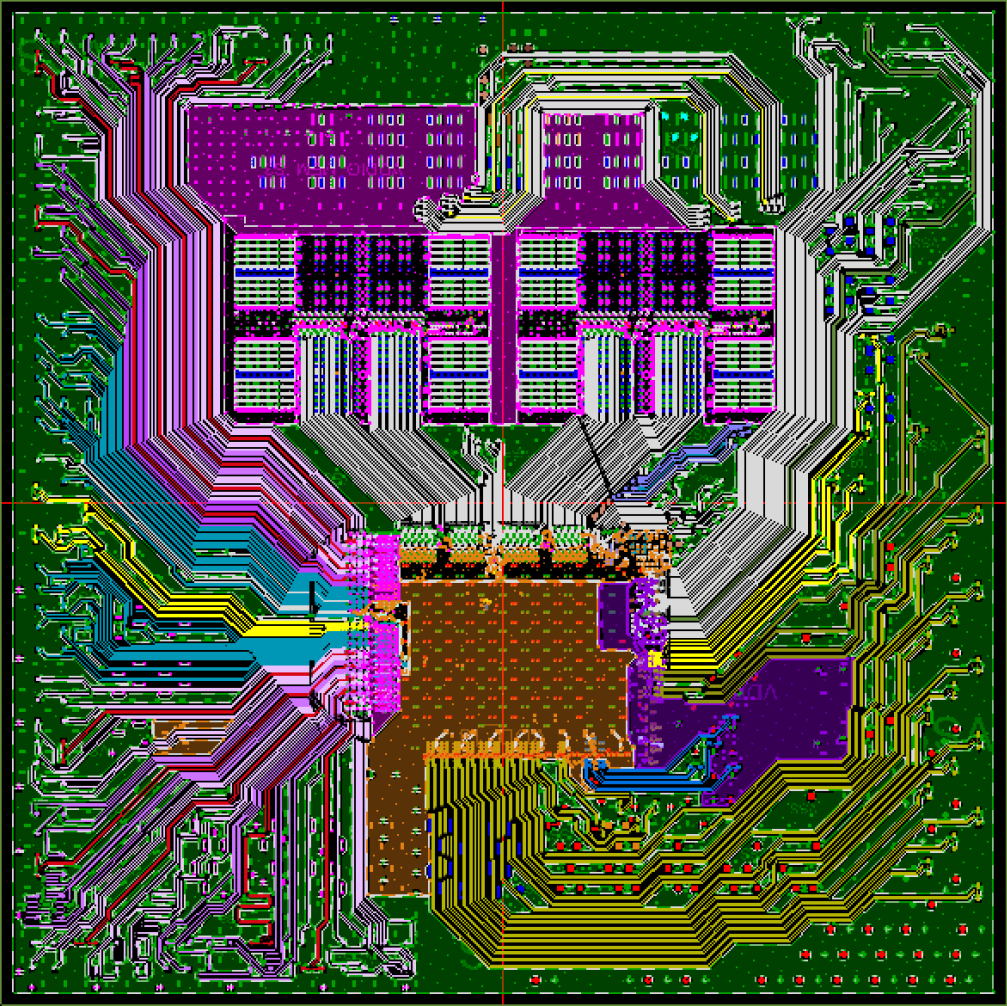
An approach of one of the layers of the CPU, you can see at a glance, the Infinity Fabric lines, which range from CCDs to IO. There is no direct communication between the 2 CCDs.
New design topology
With this new design challenge to incorporate more cores, within the same socket size, the clearest move was to move to a chiplet topology. In this way, they can add more and more cores, just by adding or removing chips from the packing.
The basic unit of Zen2 is the CCD, which consists of 2 CCX (Core Complex) units of 4 cores each, and 16MB of L3 cache (double before). Therefore, each Zen2 CCD unit has a maximum of 8cores / 16Threads, and 32MB of L3 cache.
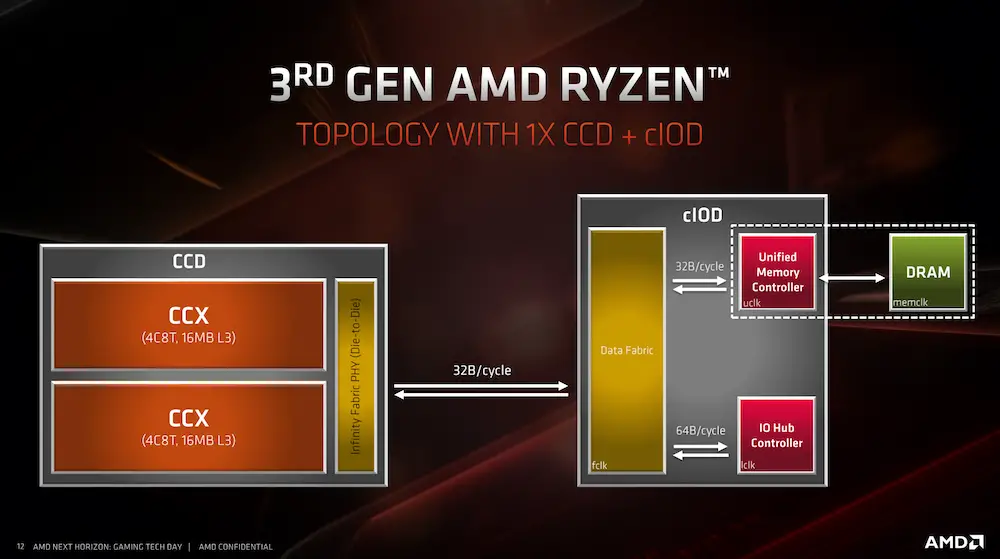
This topology is what we see in the Ryzen 5 and Ryzen 7 third generation processors. Since the maximum number of cores is 8. Recall that the communication with the IO is through the Infinity Fabric, and it is this chipset that is in charge of communicating with the rest of the components.
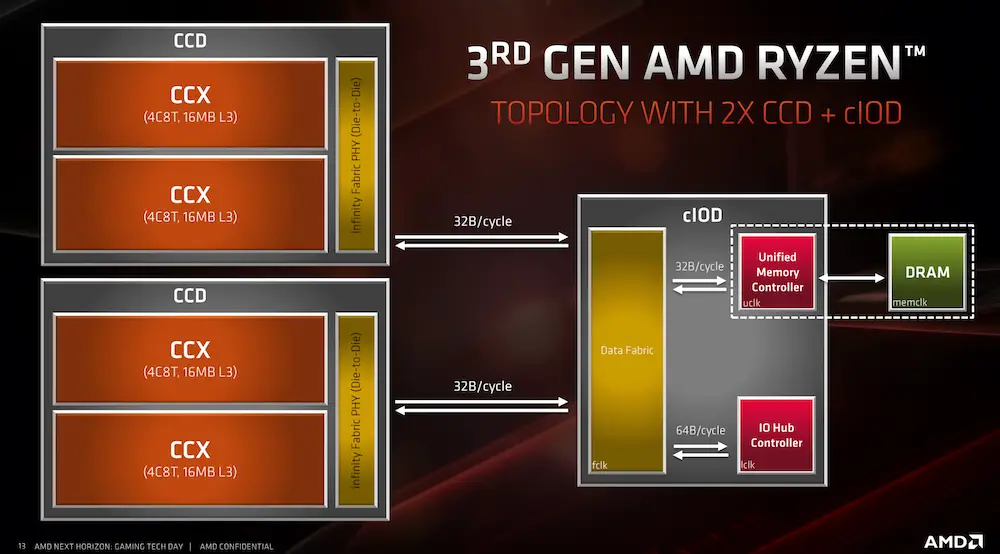
When you want to go beyond the 8 cores, it is necessary to add one more CCD, with this the maximum will be 16 cores / 32 Threads and 64MB of L3 cache. This is why a processor like the Ryzen 9 3950X (16C / 32T) is possible.
Internal improvements (Better cache and new stages)
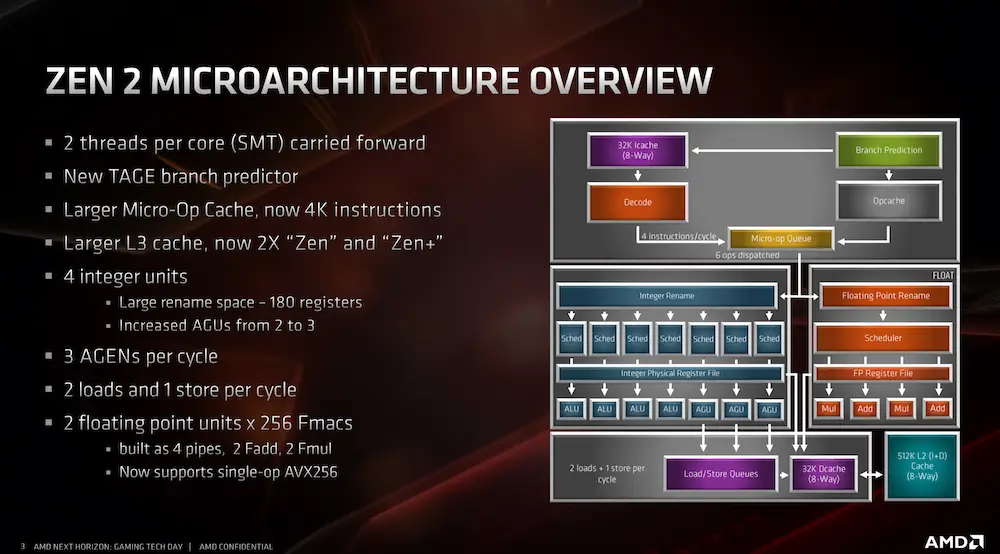
At a high level, the kernel looks a lot like what we already know about Zen. The highlights of the Zen 2 design include a different L2 branch predictor known as a TAGE predictor, a duplication of cache memory micro-op, a doubling of the L3 cache, an increase in integer resources, an increase in load / storage resources and support for single-operation AVX-256 (or AVX2).
Despite all these changes, AMD has stated that there is no frequency penalty when using AVX2, depending on its frequency platform with energy recognition.
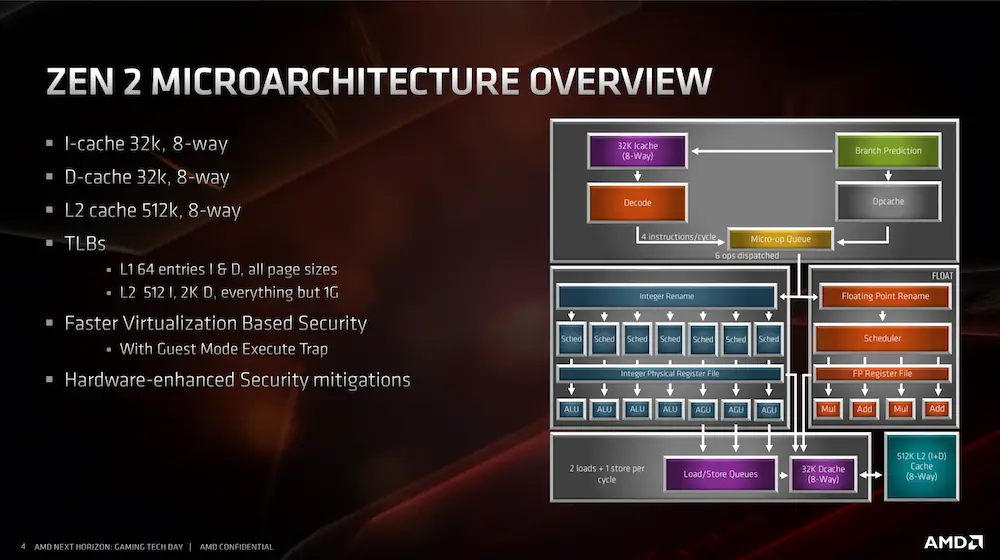
AMD has also made adjustments to the cache system, the most notable is the L1 instruction cache, which has been halved to 32 kB, but the associativity has doubled. The L1 data cache and L2 cache have not changed, however, translation buffers (TLB) have increased their compatibility. AMD also states that it has added greater virtualization support with respect to security, which helps enable future functions.
Taking a quick look, it’s easy to say that doubling the microoperative cache will offer a significant improvement in the IPC in a number of scenarios, and combining that with an increase in load / storage resources will help drive further instructions. The double L3 cache will help in specific workloads, as would the single AVX2 operation support, but the improved branch predictor will also show an increase in raw performance. In summary, for a paper analysis, the AMD + 15% improvement in CPI seems to be a very reasonable number to promote.
Security: Something that stays with Zen 2
One of the important issues of the past year, and that is maintained throughout 2019, is the security in the CPUs, specifically those based on X86 architecture. Since its design and microcode, it allowed malicious people to be able to perform tasks remotely, or execute malicious code to extract data, without one noticing.
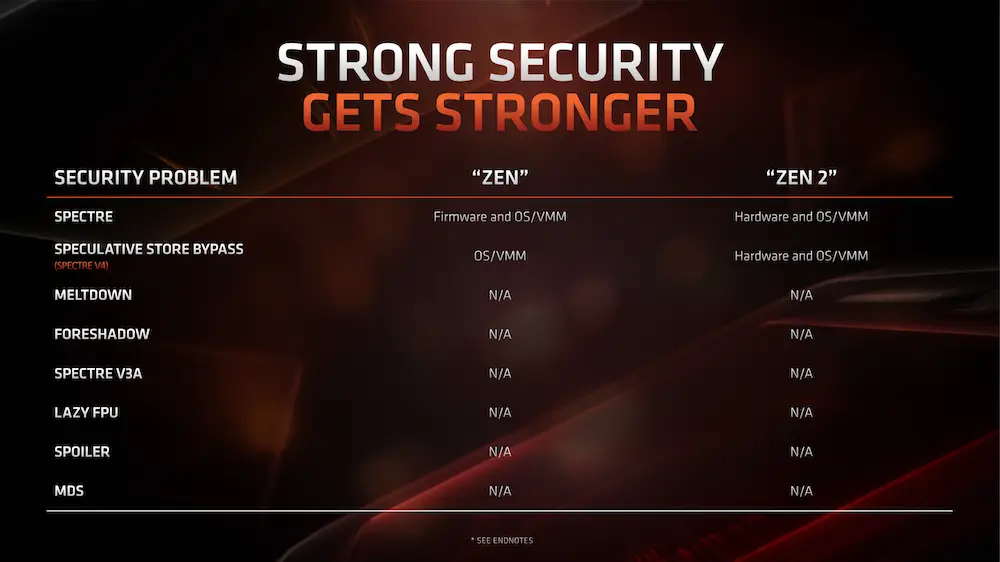
Like all processors based on the Zen architecture, these new Zen 2s have mitigations at the hardware level and also at the operating system level already implemented by Microsoft. Therefore, they would not be affected by the recent and better known security problems in the CPUs, which on the Intel side, has become a great headache.
Memory Support and Overclock
Another point that this new family of Ryzen processors improves, is the support and overclock in the memories. Something that in the current generations of Ryzen processors caused many headaches. Well, with this new Zen 2, and the improved I / O chip, using high frequency memories will not be a problem, nor will it be to take them to the highest frequencies.

In fact, they promise that frequencies of up to 5100MHz can be achieved in the memories (that allow it, clearly) and all this by air. This could be achieved, in part by the aforementioned, of separating the chips in the CPU and providing a better memory controller in the IO chipset, in conjunction with the X570 chipset. In addition to that with Infinity Fabric 2.0, dividers are implemented automatically, to maintain the stability of the system as a whole.
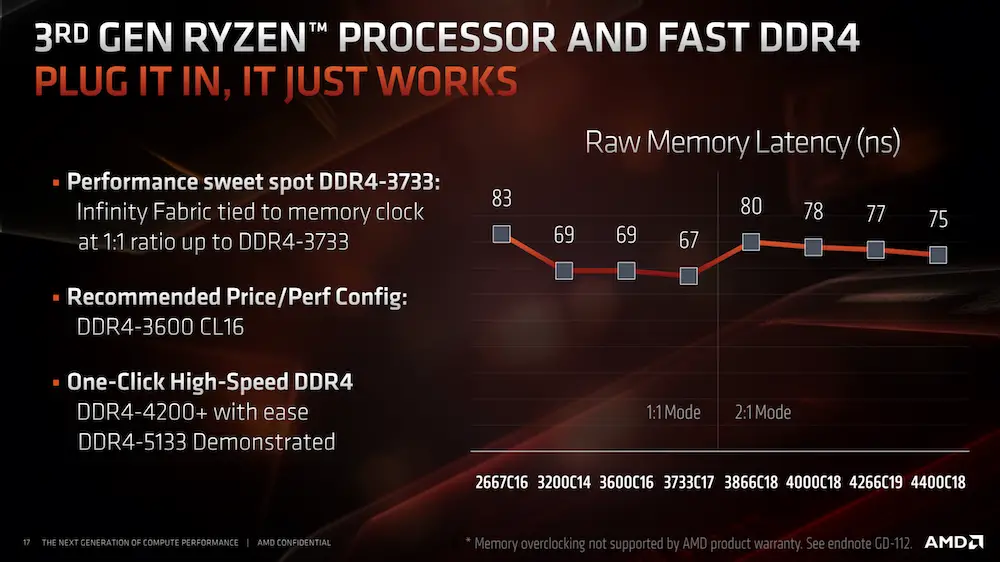
Whenever we install quick memories in our new system, Infinity Fabric will operate at a 1: 1 ratio with the frequency of the memories, this until a frequency of 3733MHz is reached. When we exceed that frequency, IF will automatically enter a 2: 1 ratio mode, this means that it will operate at half the frequency of the memory.
This obviously implies that the latency will increase a little, and the performance will be impacted by approximately 1-2%, but this had to be done in order to maintain the stability of the IF, and in the process to achieve higher frequencies in the memories.
The Ryzen 3000 family of processors
Let’s get to know a little about these new 3rd generation processors.
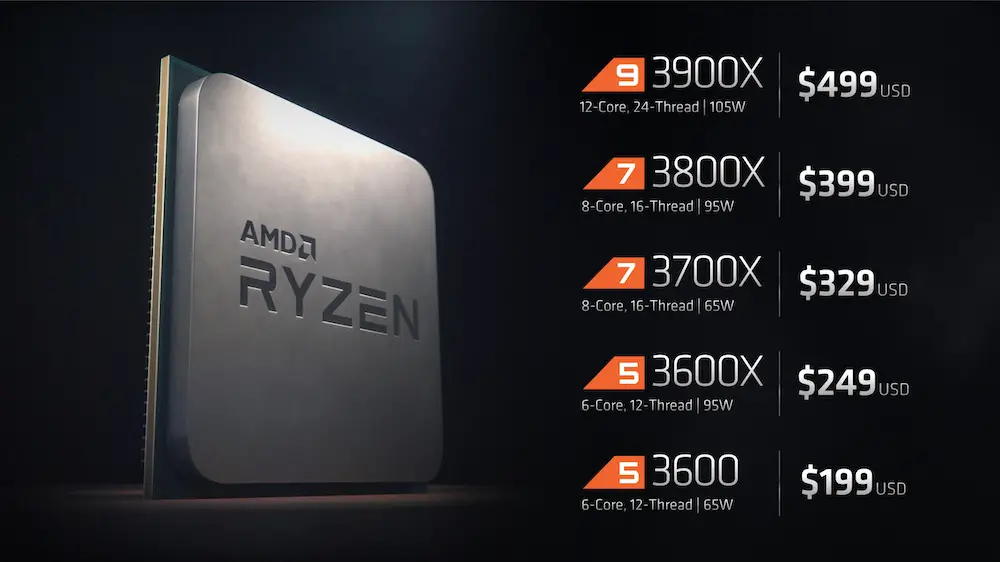
The prices remain very attractive, something that we liked and attracted attention, since being a new way of manufacturing and production, they should lower costs, but by incorporating more cores they tend to rise. With this AMD continues in its line of offering more cores at an attractive price to the consumer.
Windows 10 and its improvements
Together with all the new features of these processors, AMD together with Microsoft, implemented improvements at the operating system level, in this way a problem that was occurring in certain current scenarios was corrected, where the Windows scheduler does not know how to redirect the priorities of execution of the tasks, which led to a greater latency, and consequently, a decrease in the overall performance.
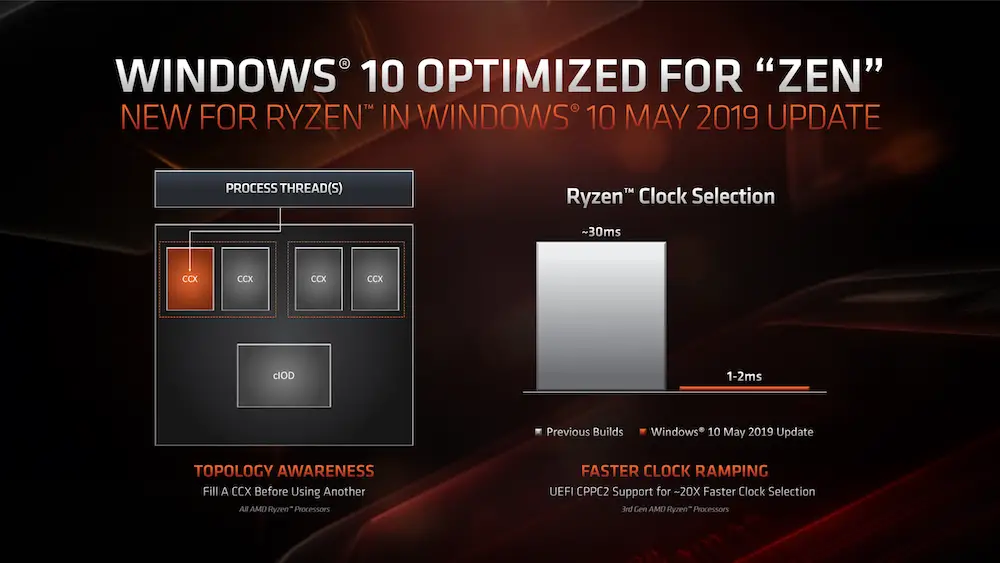
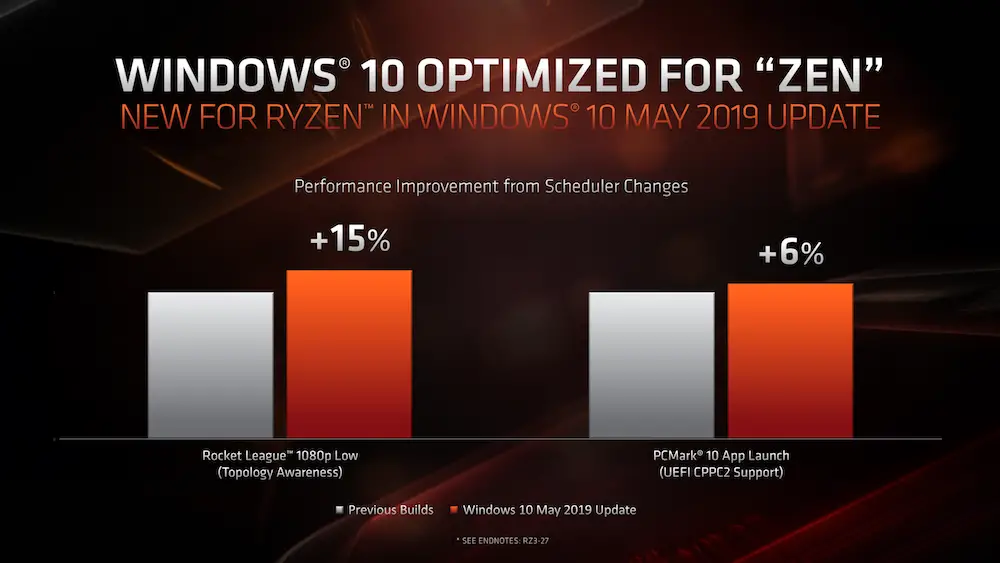
With the so-called Topology Awareness in Windows and CPPC2 in the BIOS, AMD together with Microsoft improved response times to frequency changes in Windows, and also in the load distribution of each CCX. With this patch of improvements, now a CCX must be completely full of tasks, to just skip instructions to another CCX.
This could generate up to 15% improvement in performance, and 6% improvement in response time in applications. This is available with the May update of Windows 10, but is only activated with X570 boards.
The whole family
Finally, this is the new family of 3rd Generation Ryzen processors, from the “modest” Ryzen with Radeon Vega Graphics, to the top of the Ryzen 9 3900X line.
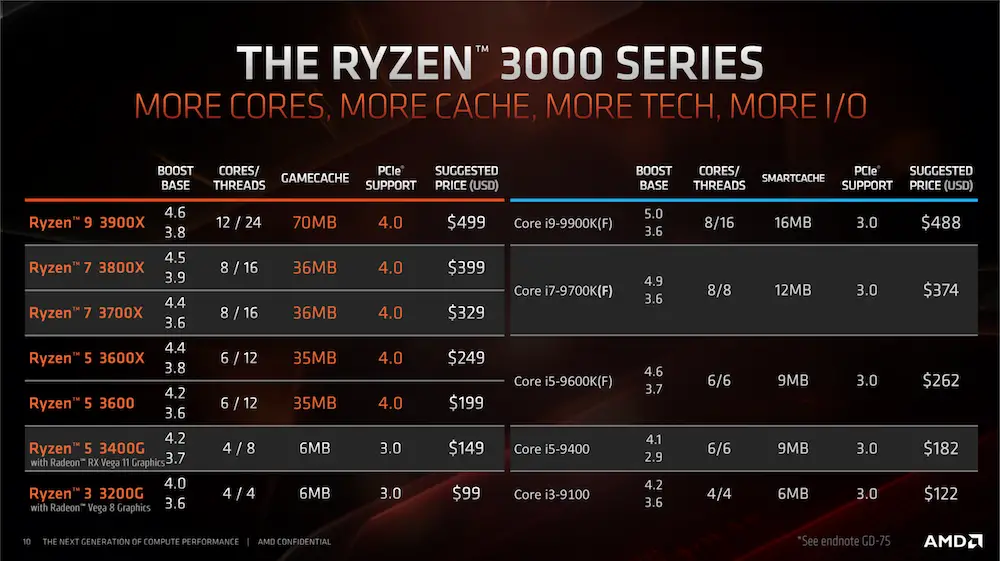
A whole range of options, from processors with integrated graphics, up to 12 cores and 24 threads with frequencies reaching 4600MHz.
Specs.
| specs | AMD Ryzen 9 3900X | AMD Ryzen 7 3700X | AMD Ryzen 5 3600 | AMD Ryzen 7 2700X | Intel Core i9 9900K | Intel Core i7 9700K |
|---|---|---|---|---|---|---|
| Fabrication process | 7nm | 7nm | 7nm | 12nm | 14nm | 14nm |
| Cores | 12 | 8 | 6 | 8 | 8 | 8 |
| Threads | 24 | 16 | 12 | 16 | 16 | 8 |
| Freq. Base | 3.8 GHz | 3.6 GHz | 3.6 GHz | 3.7 GHz | 3.6 GHz | 3.6 GHz |
| Freq. Max | 4.6 GHz | 4.4 GHz | 4.2 GHz | 4.3 GHz | 5.0 GHz | 4.9 GHz |
| L2 cache | 6MB | 4MB | 3MB | 4MB | 2MB | 2MB |
| L3 cache | 64MB | 32MB | 32MB | 16MB | 16MB | 12MB |
| TDP | 105W | 65W | 65W | 105W | 95W | 95W |
| Sist. Refrigeration | Wraith Prism with RGB LED | Wraith Prism with RGB LED | Wraith Stealth | Wraith Prism with RGB LED | N / A | N / A |
| USD price | $ 499 | $ 329 | $ 199 | $ 254 | $ 485 | $ 365 |
| CLP price | $ 445,000 | $ 295,000 | $ 175,000 | $ 250,000 | $ 439,900 | $ 349,900 |
The protagonists
A small look from CPUz to what will be the protagonists of this article.
Ryzen 9 3900X
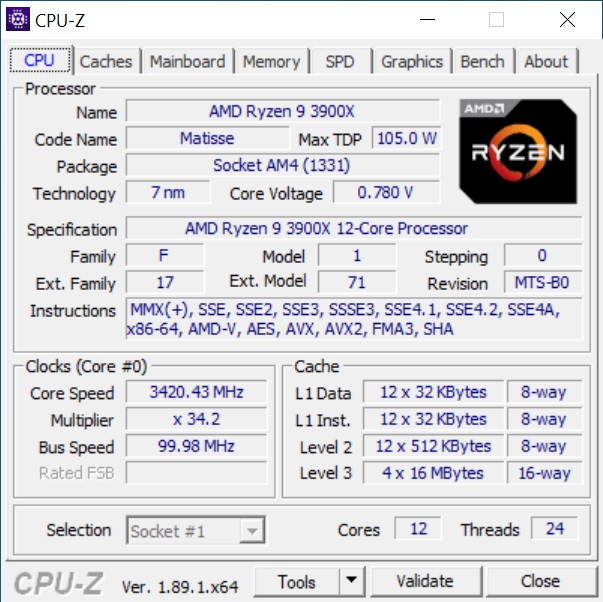
We can see that in the L3 cache the 4 CCX are indicated, perhaps it is a CPUz error, or, this model has the 4 active CCX.
Ryzen 7 3700X
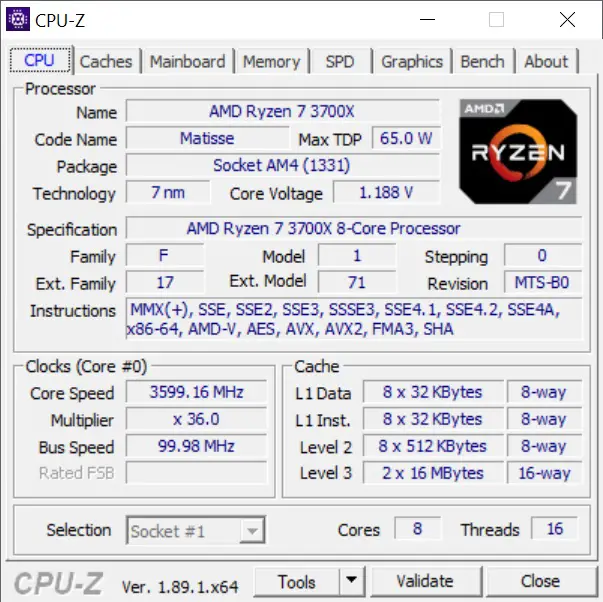
Finally you have the R7 3700X, where unlike the previous one, you only have 2 CCXs used, this because the design is only 1 CCD in the package.
First look.
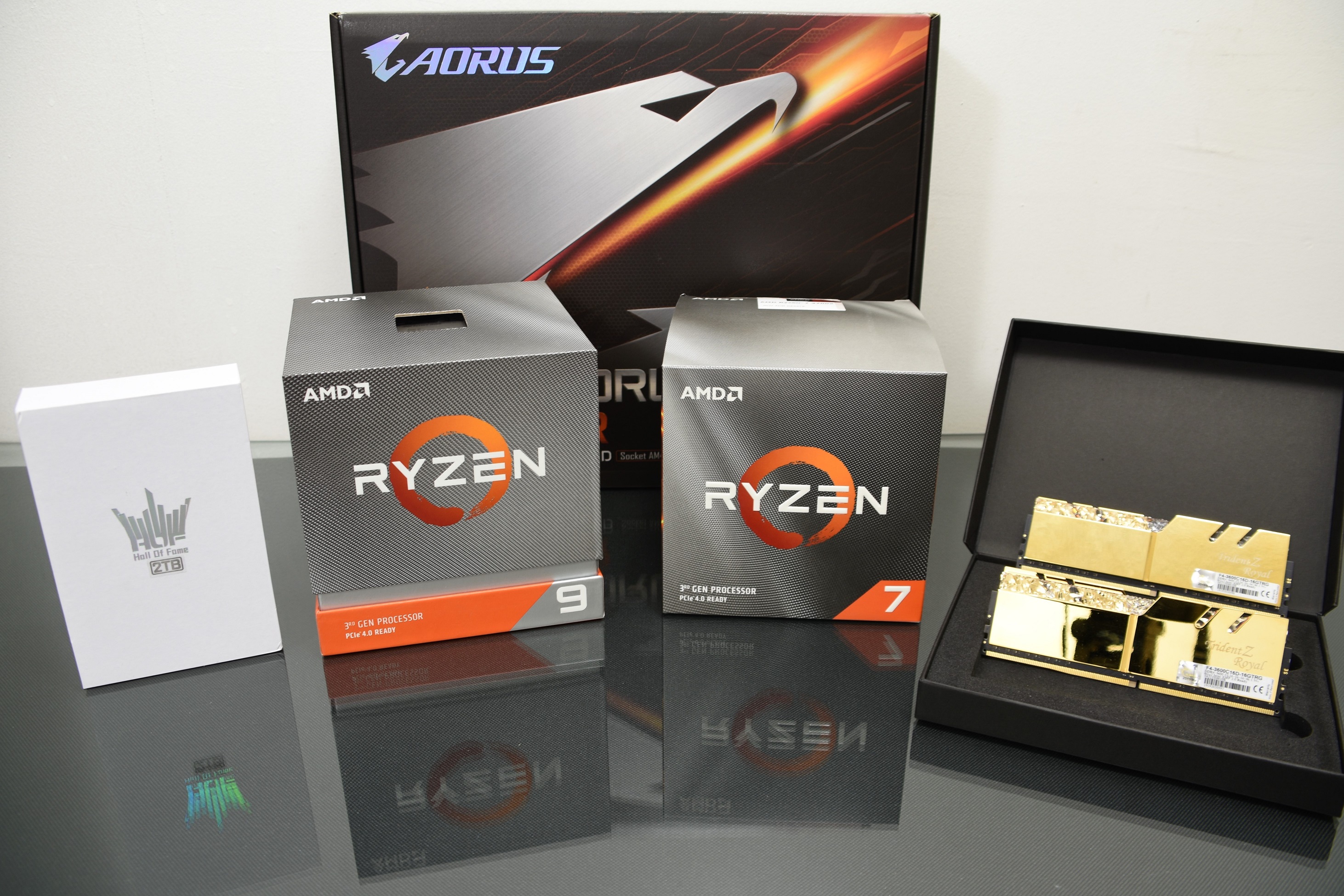
As usual AMD leaves us for testing a complete kit with everything necessary to demonstrate the full potential of its processors
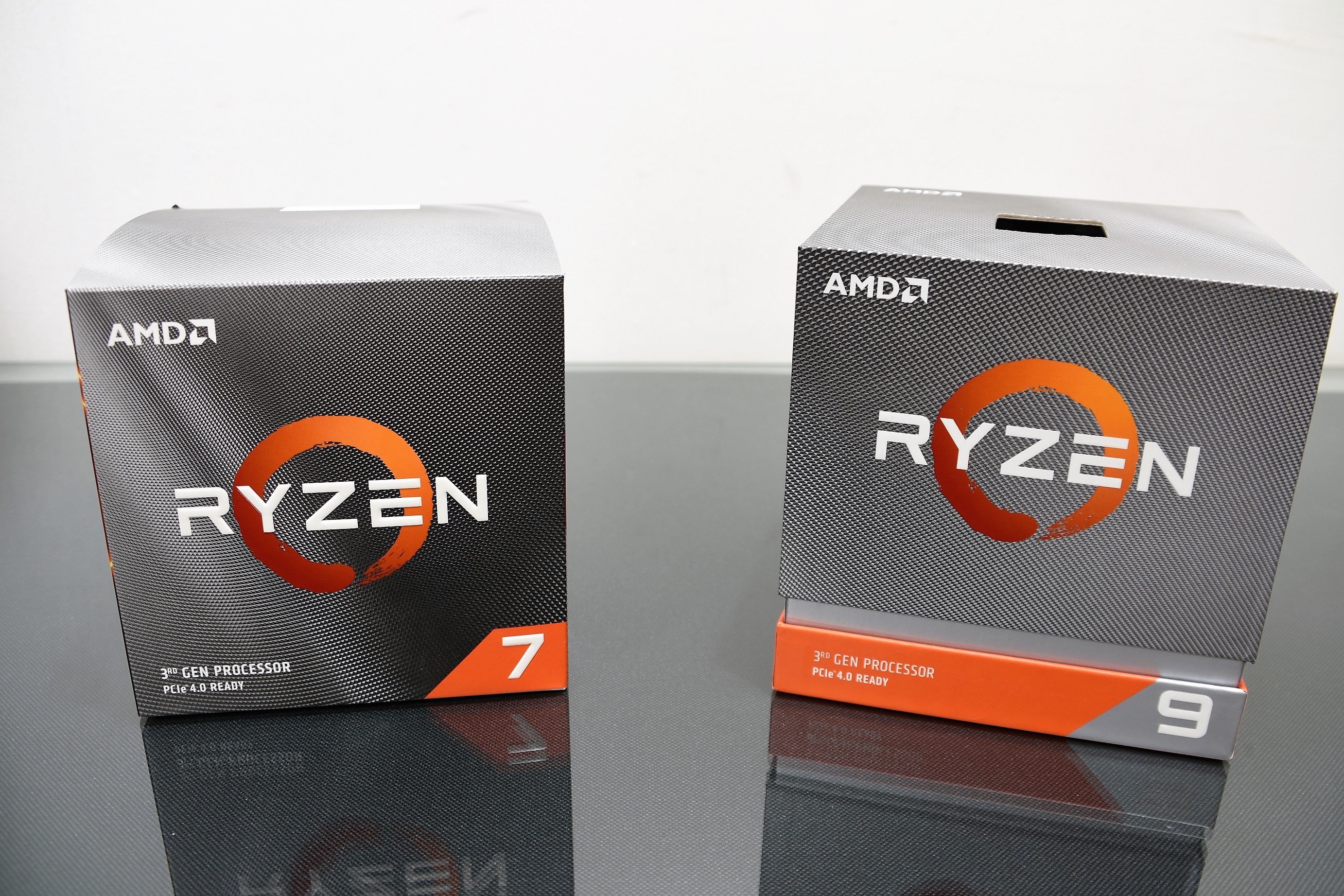
The packing of Ryzen 7 3700X It remains the same, except for aesthetics, however the Ryzen 9 3900X we see a different package, more attractive and better finish.
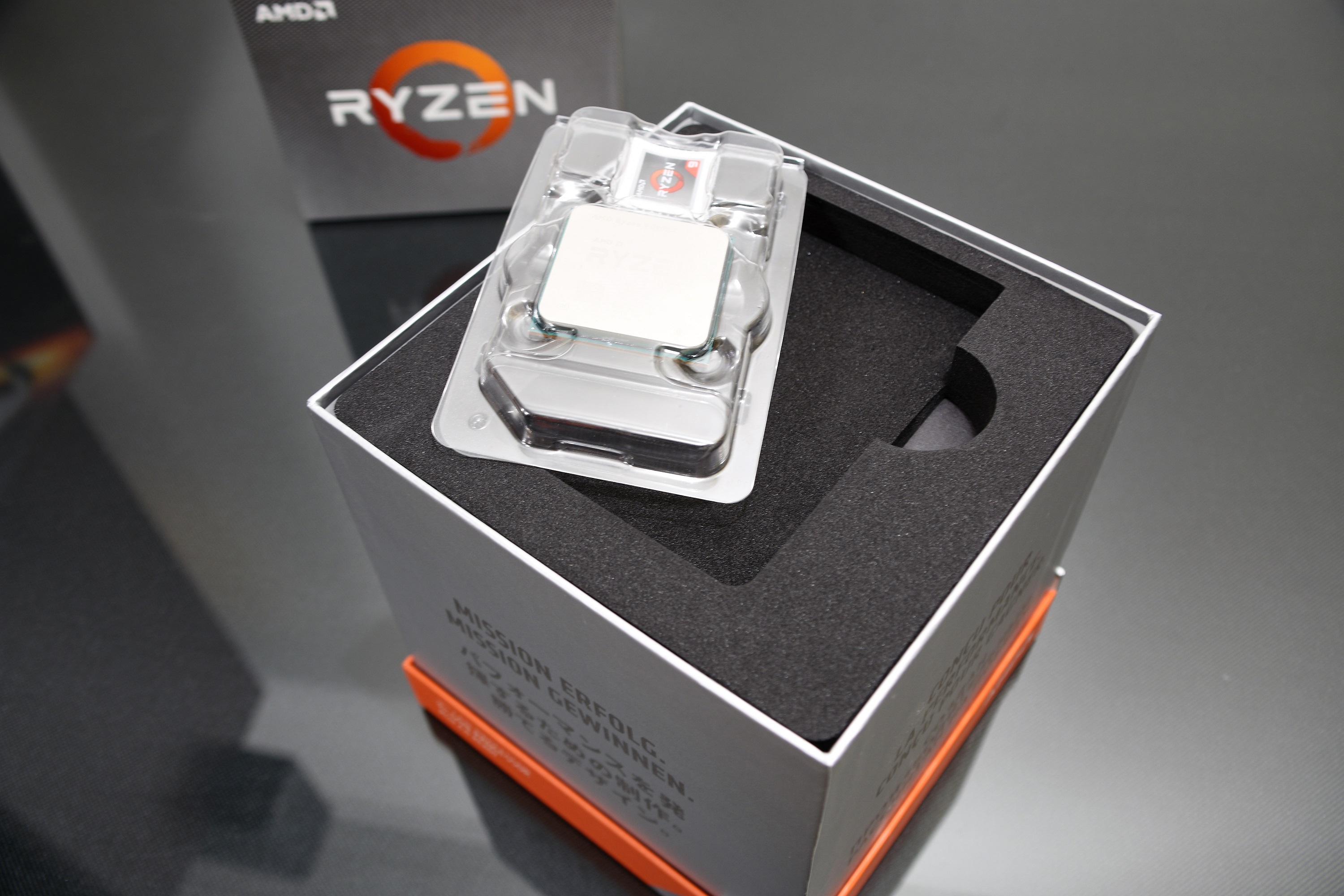
In the upper area of this we find the fully padded processor to avoid bumps.
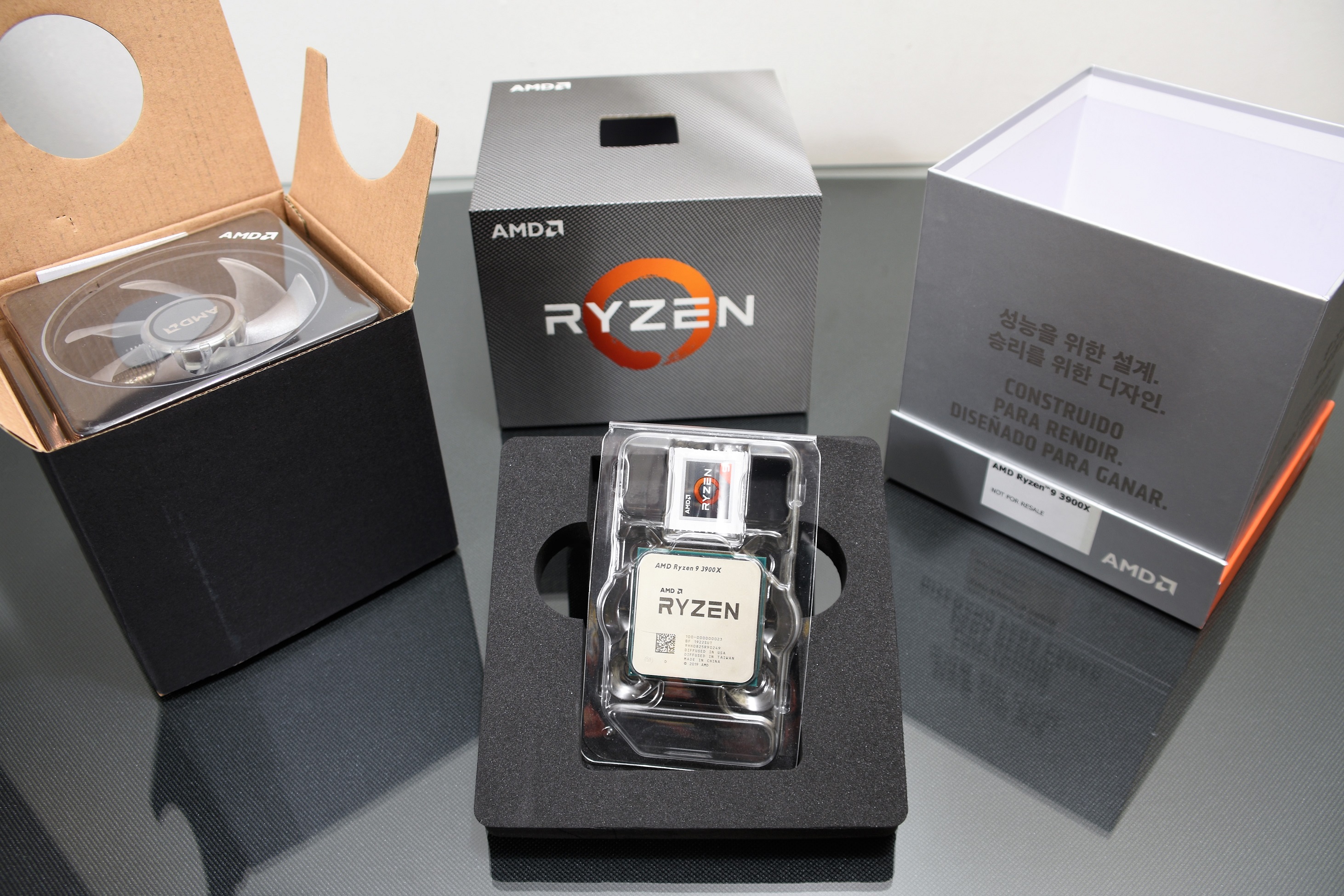
The content of the Ryzen 9 3900X It shows a two-body package, with a well-resistant foam padding and under this the cooling system.
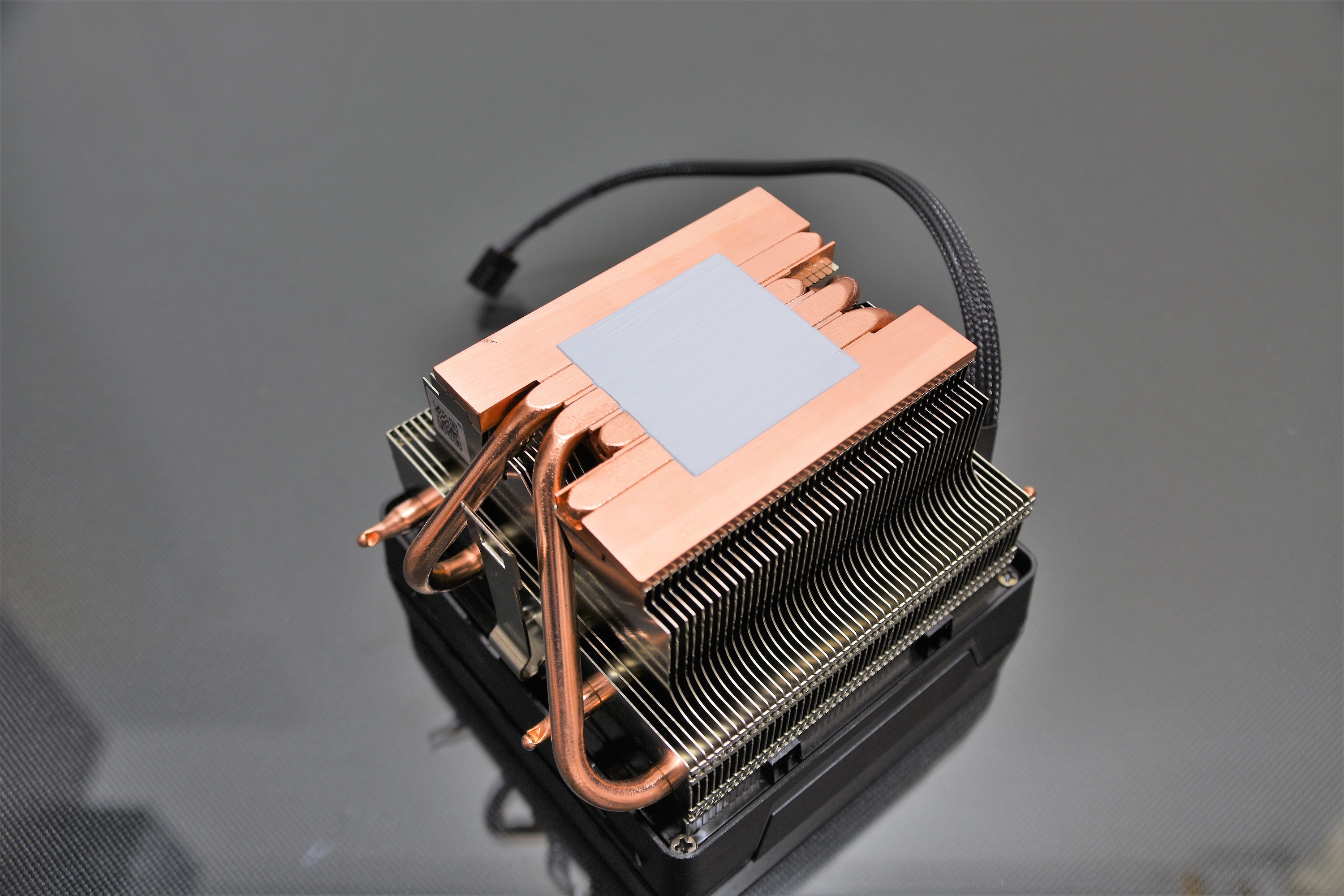
AMD incorporated in its processors its best cooler, the Wraith Prism. Obviously with RGB.
Testing and Methodology Platform.
| Test Platform | |
|---|---|
| Processor | – AMD Ryzen 9 3900X – AMD Ryzen 7 3700X – AMD Ryzen 5 3600 |
| Motherboard | – GIGABYTE X570 AORUS MASTER |
| Memories | – G. SKILL TridentZ Royal 3600MHz 2x8GB |
| Refrigeration | – AMD Wraith Prism RGB LED |
| Graphics card | – NVIDIA GTX 1070 Ti 8GB |
| Power supply | – Corsair RM1000X |
| Storage | – SAMSUNG 960PRO 512GB M.2 |
| Monitor | – ASUS MG28UQ |
- Windows 10 Pro x64 operating system [Update 1903].
- The tests were performed in an environment with a temperature of approximately 25 ° C.
- The platform was used without a cabinet.
- The drivers used for NVIDIA graphics cards were: ForceWare 430.86 WHQL
- The resolutions of the synthetic tests are the default ones for each of the benchmarks.
- The real test resolutions are 1920 × 1080 and 3820 × 2160 with all the maximum available graphics in each game.
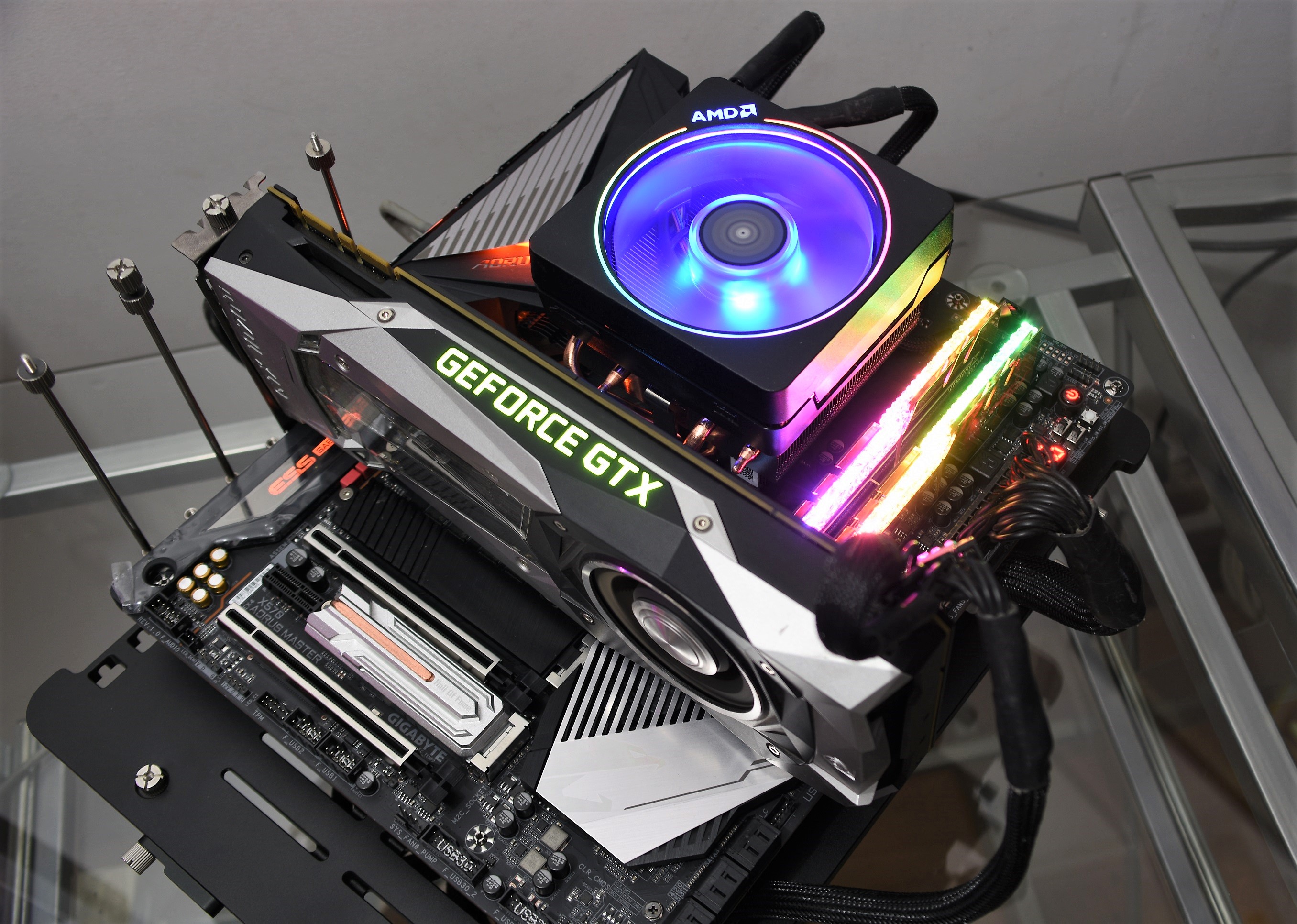
A photograph of the platform walking.
2D tests
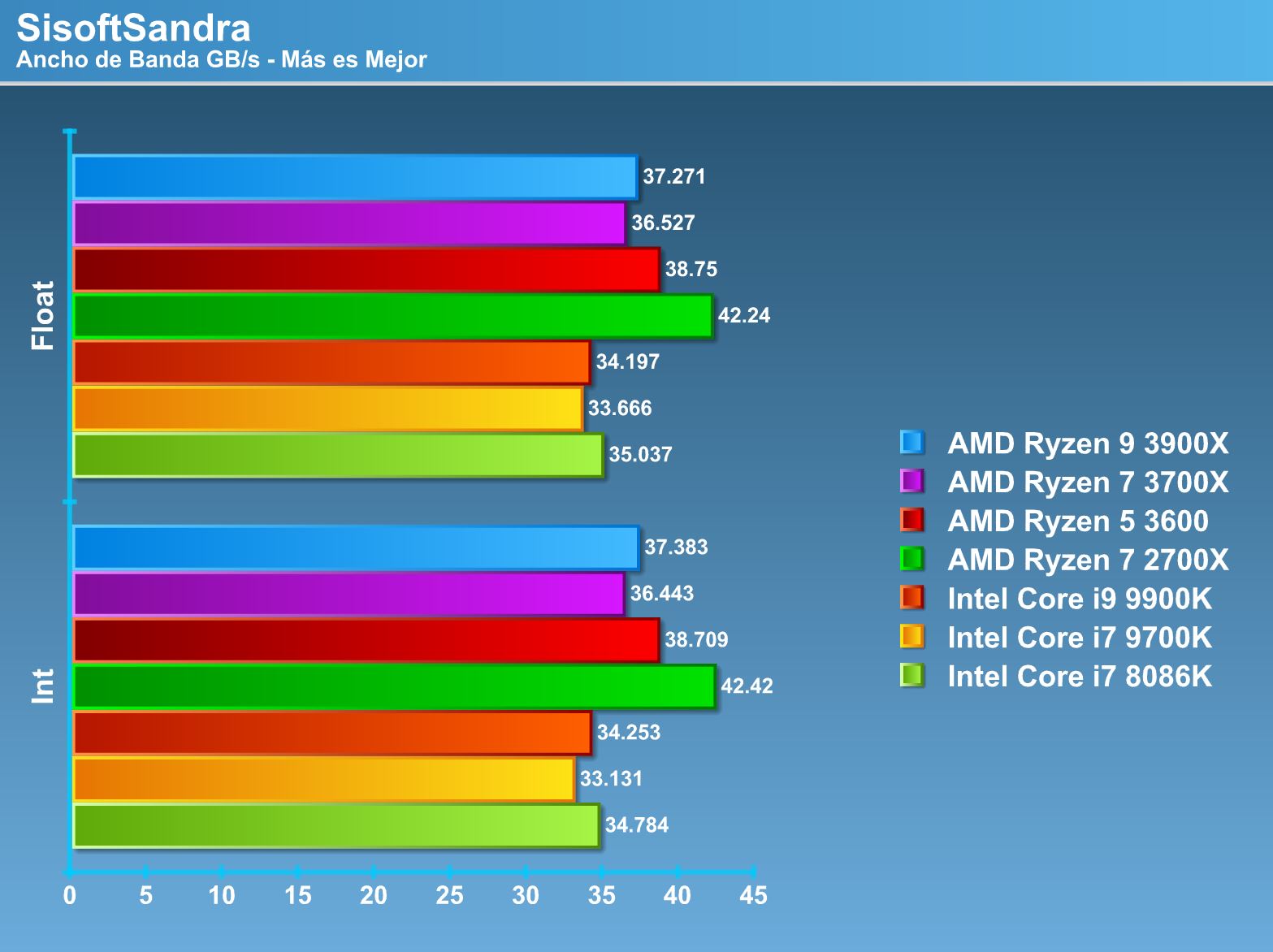
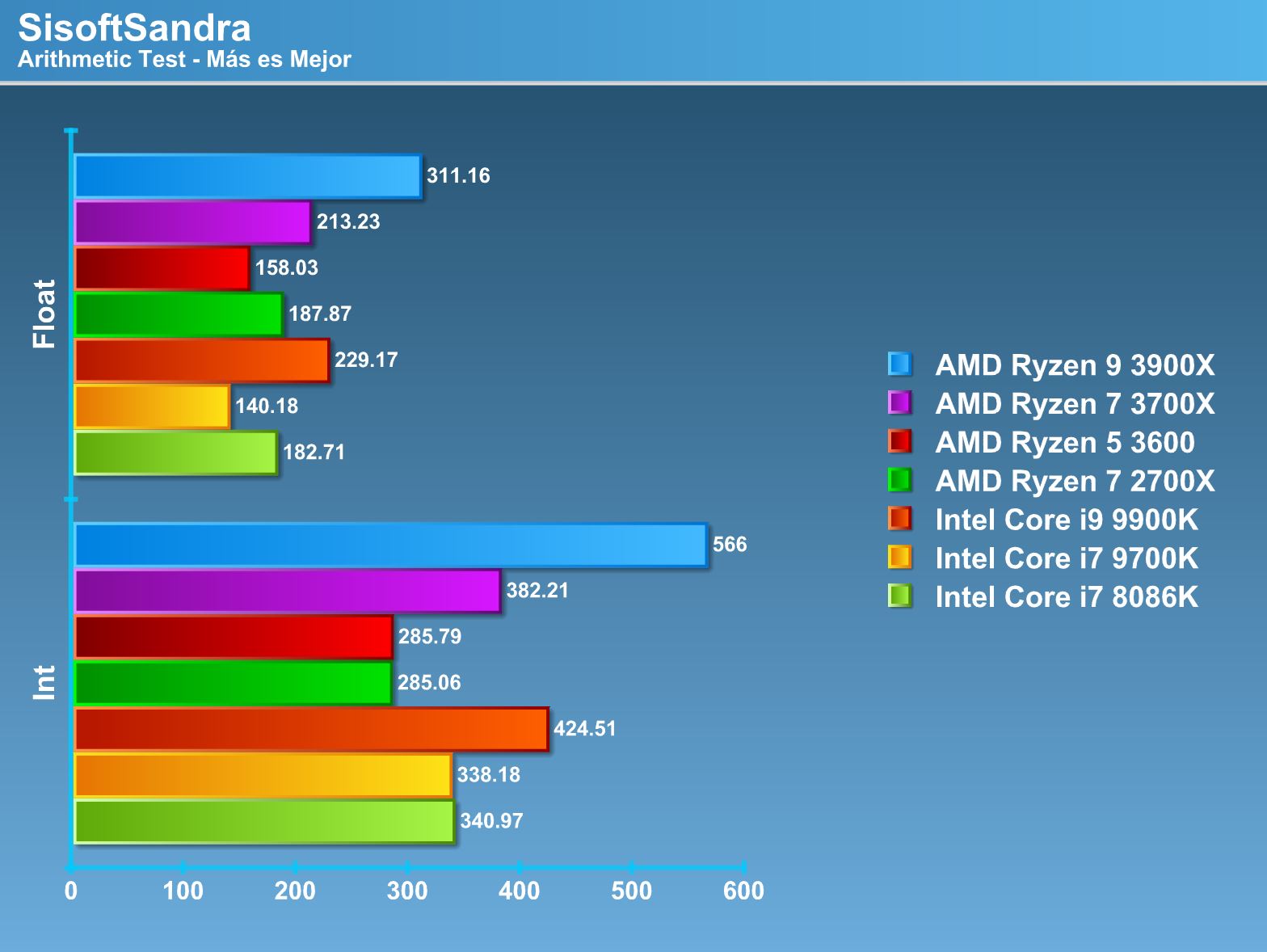
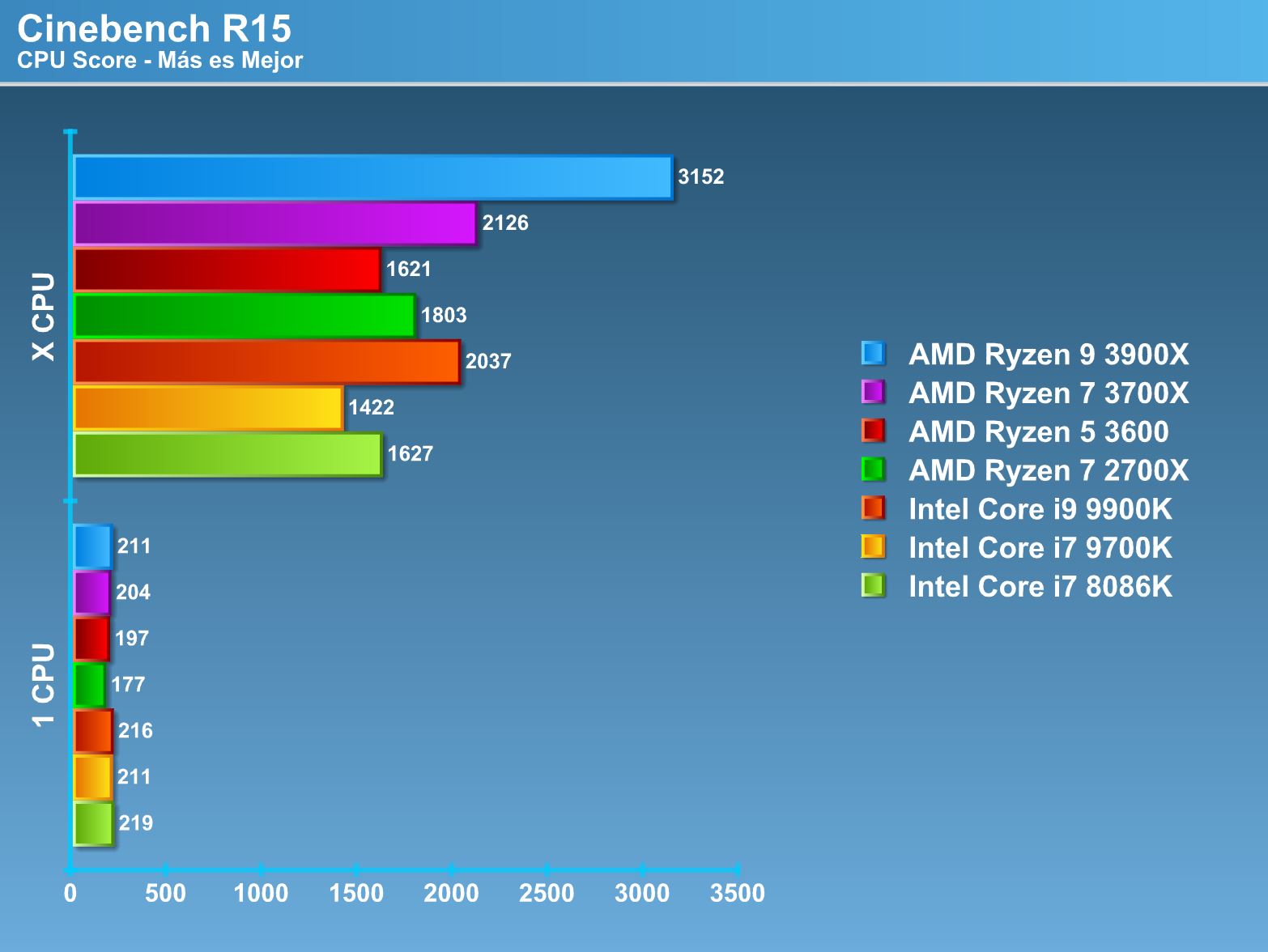
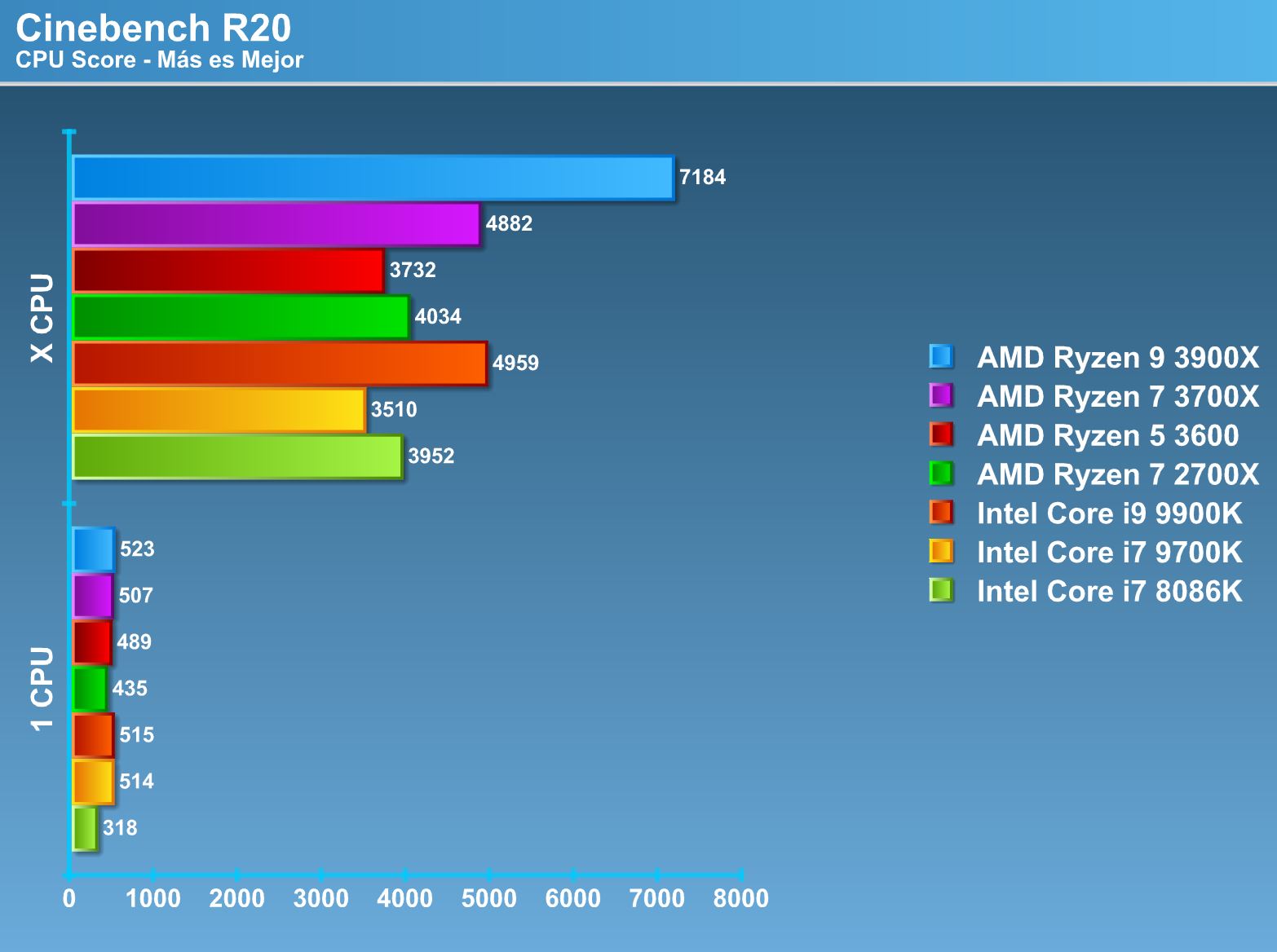
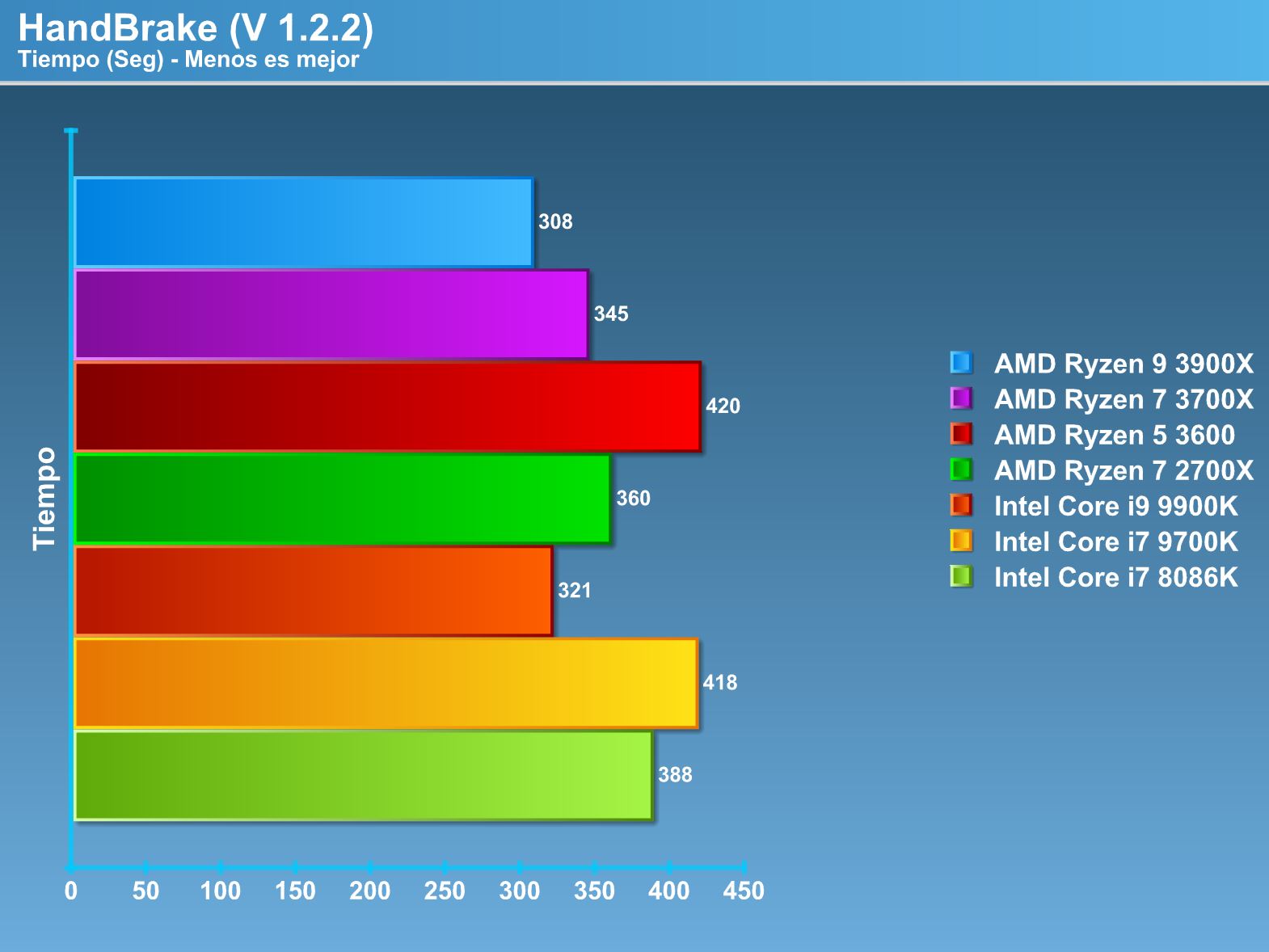
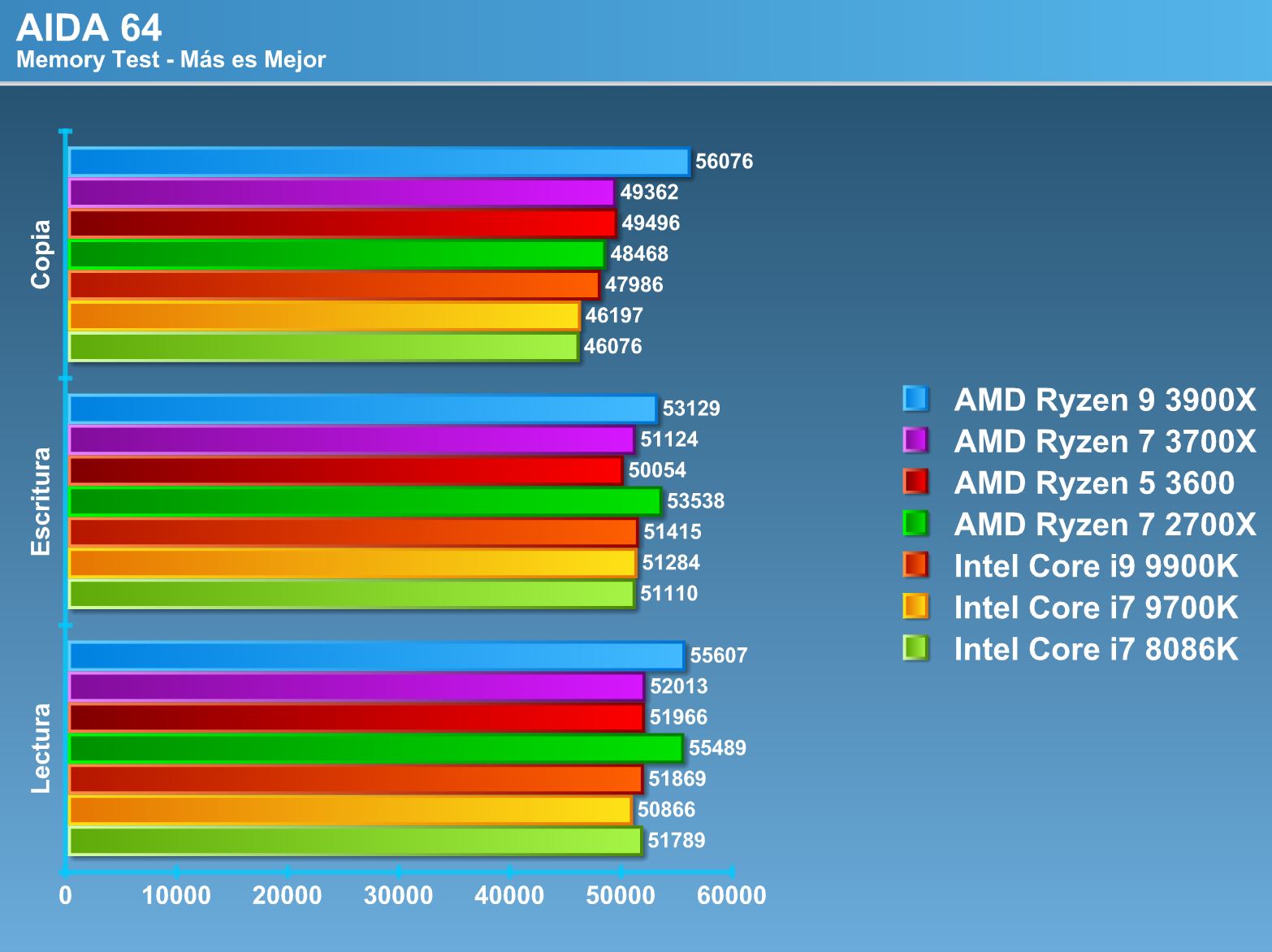
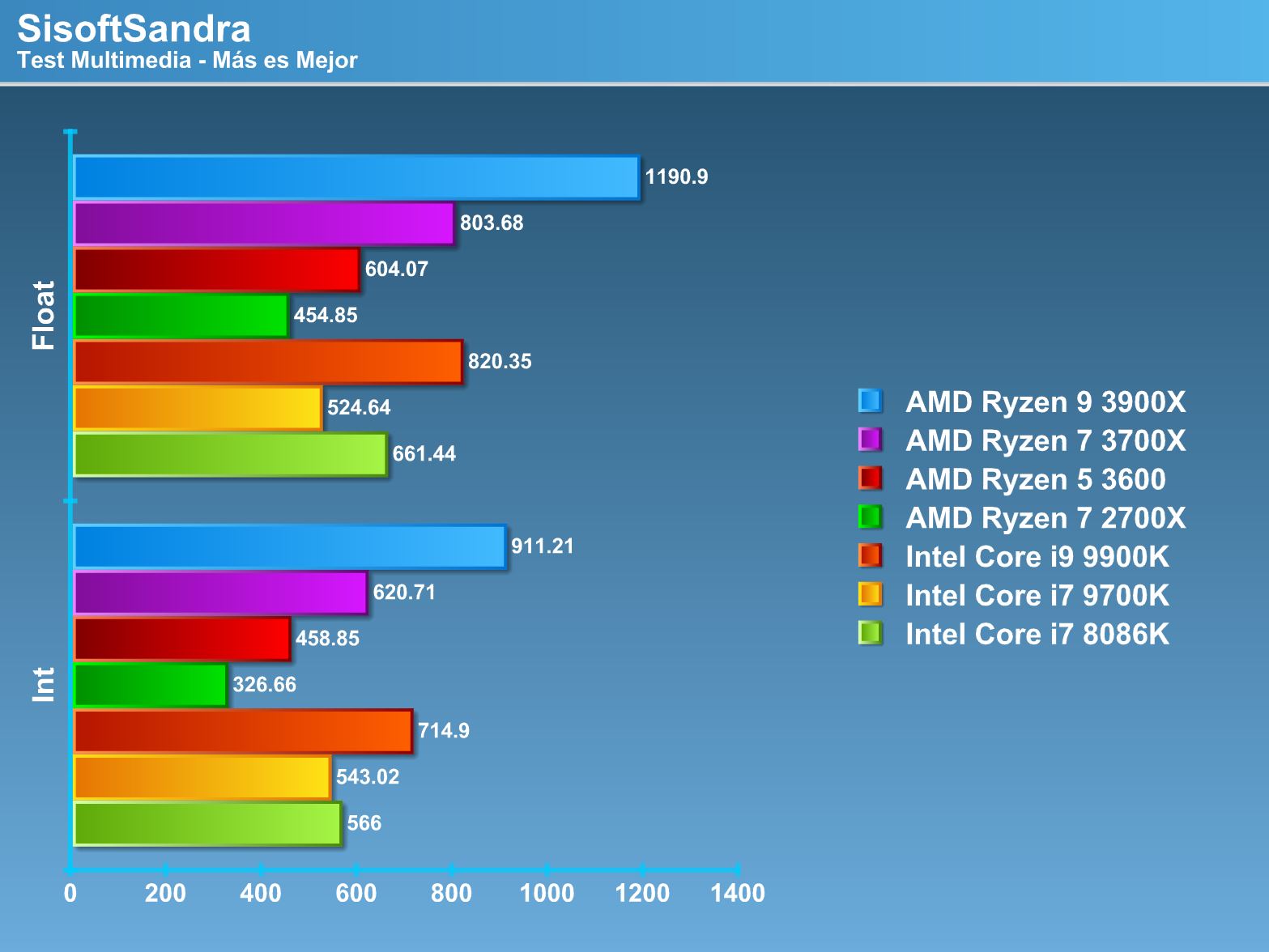
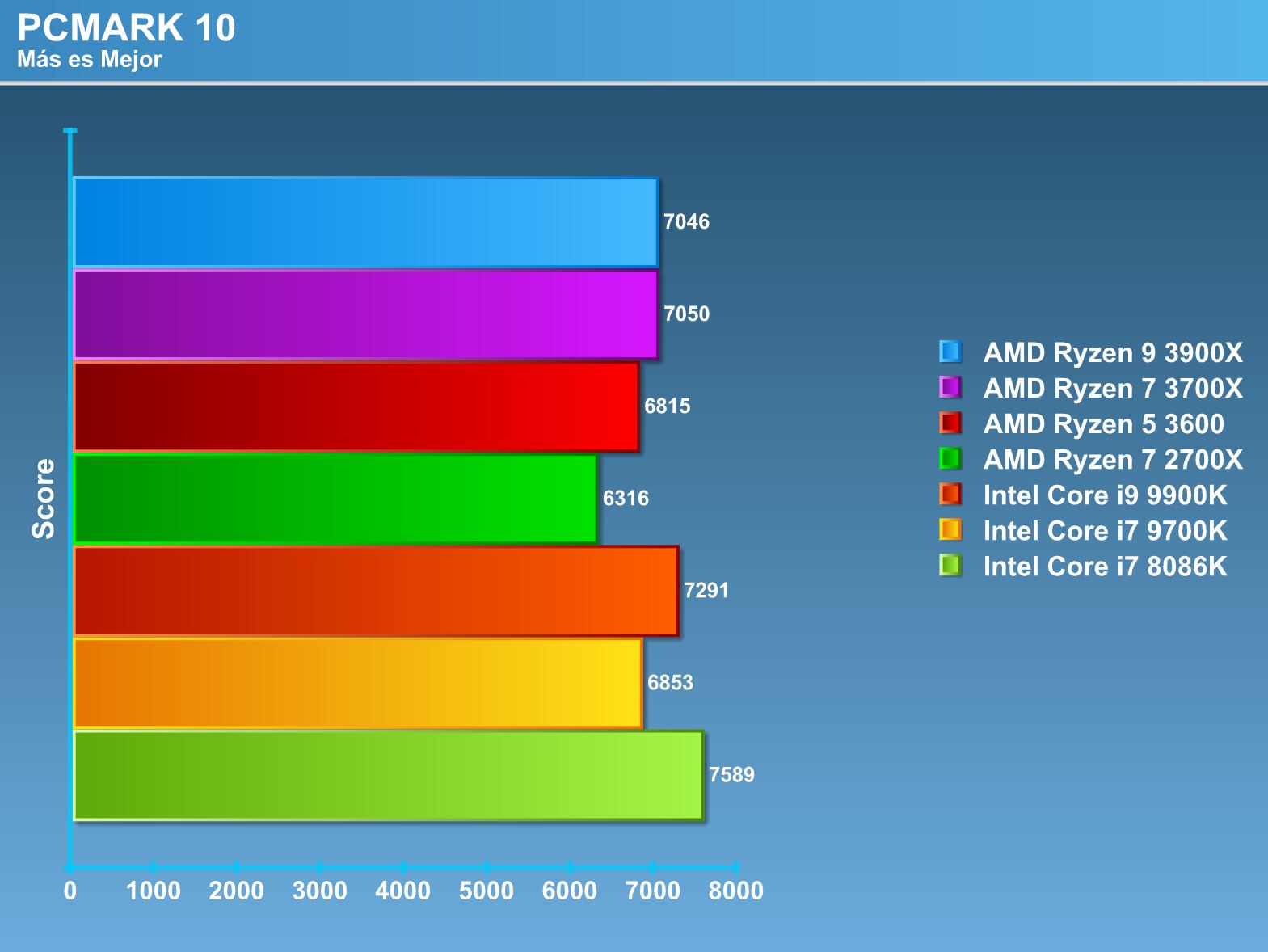
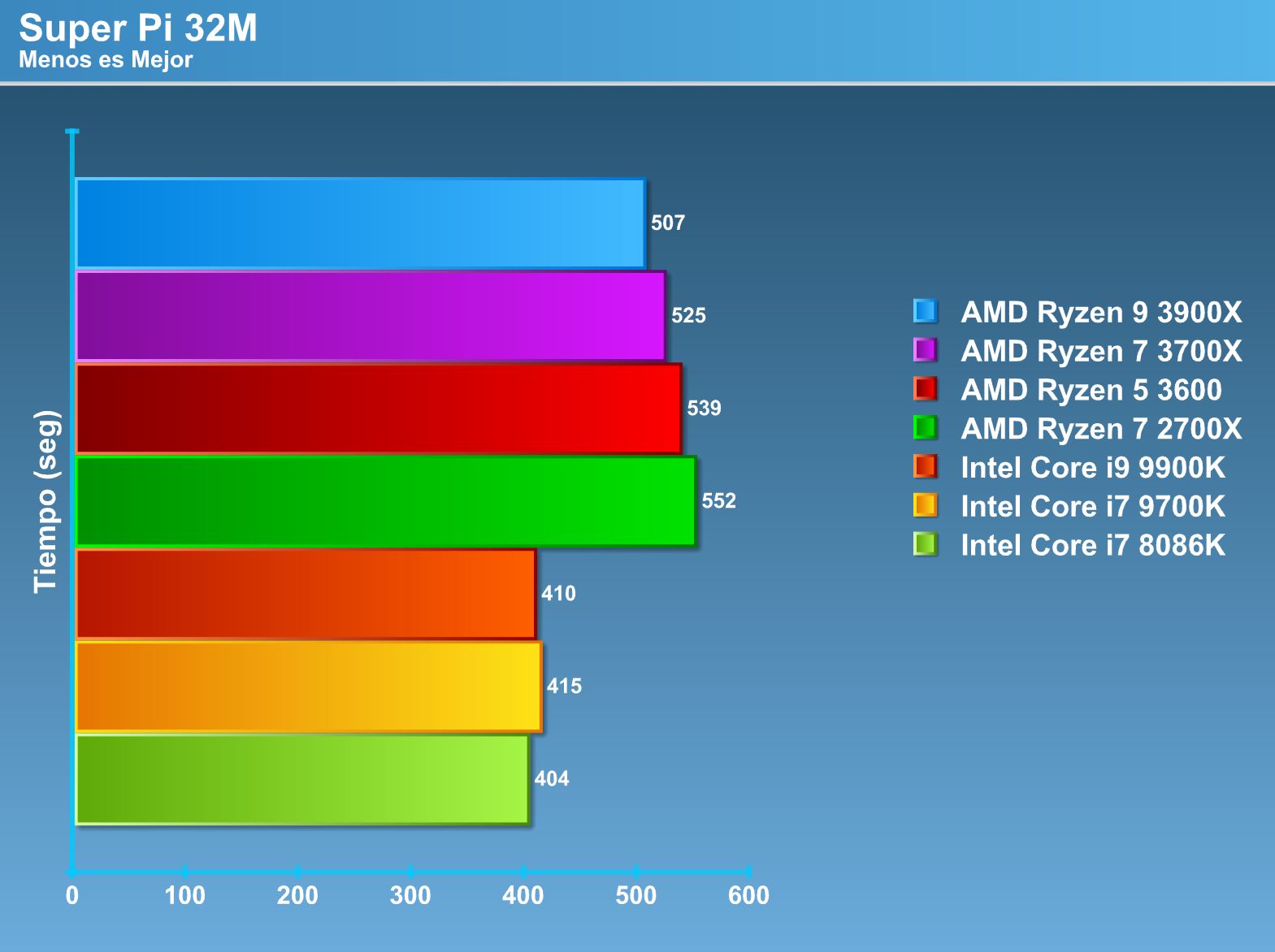
3D tests
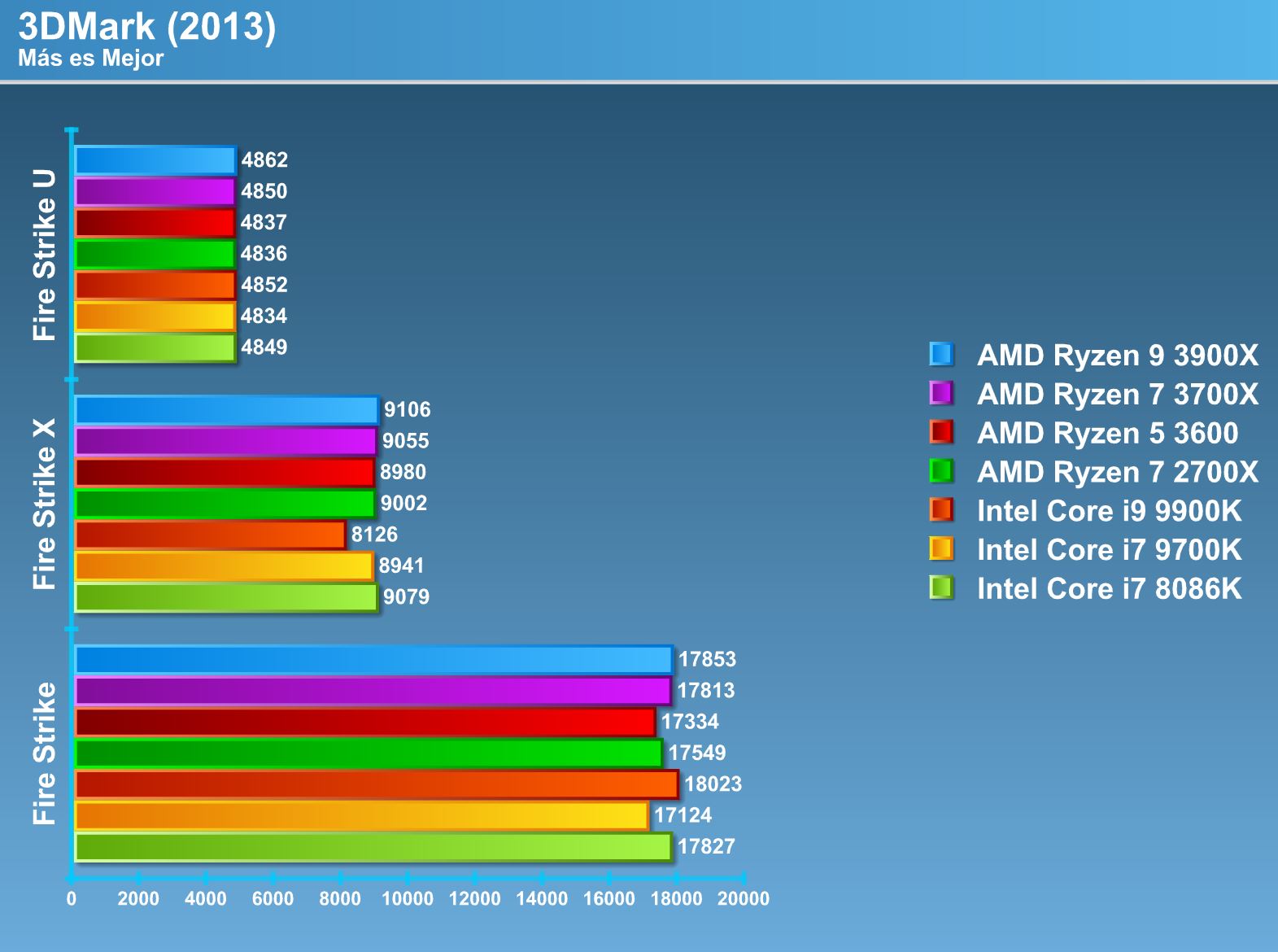
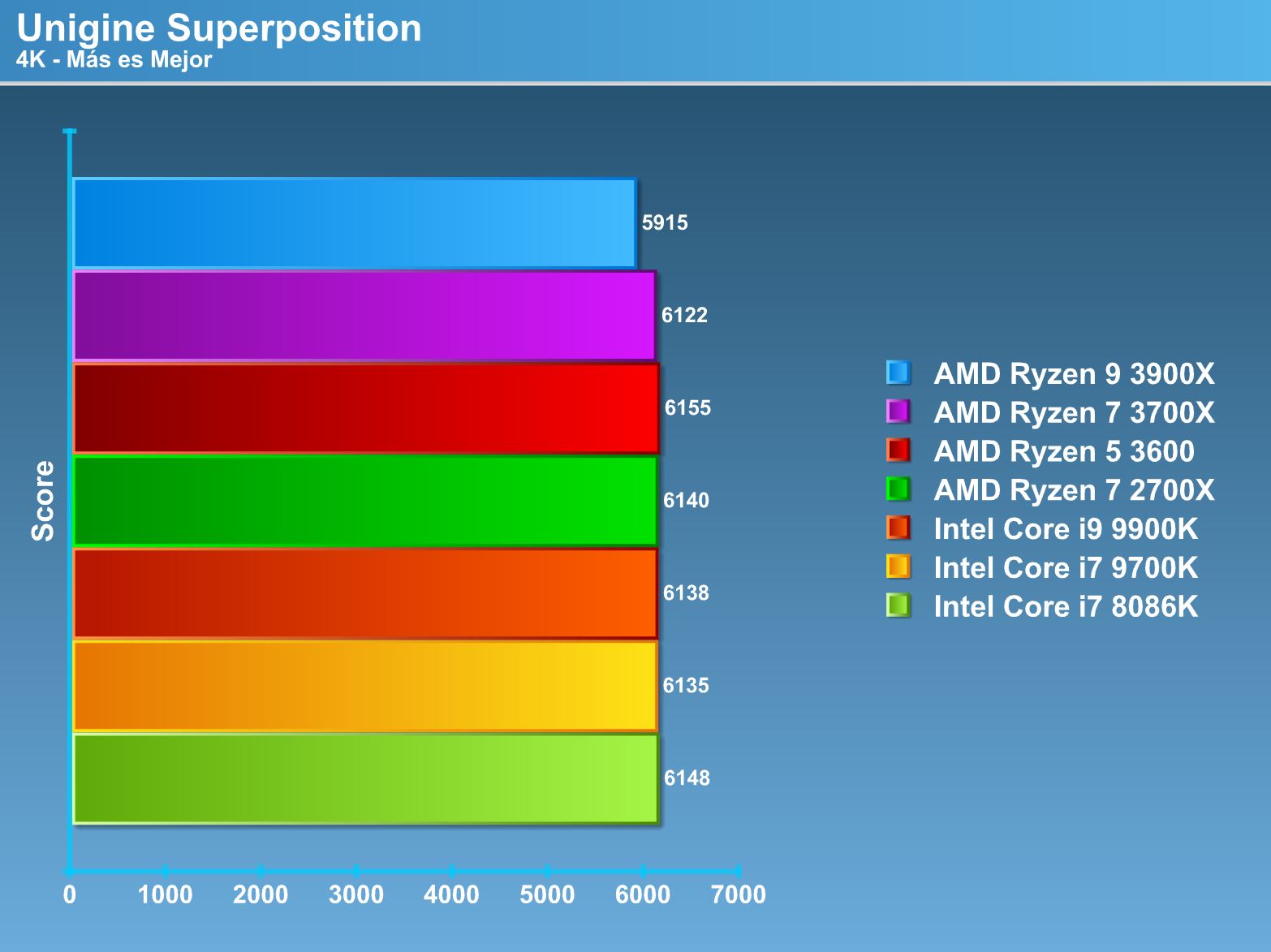
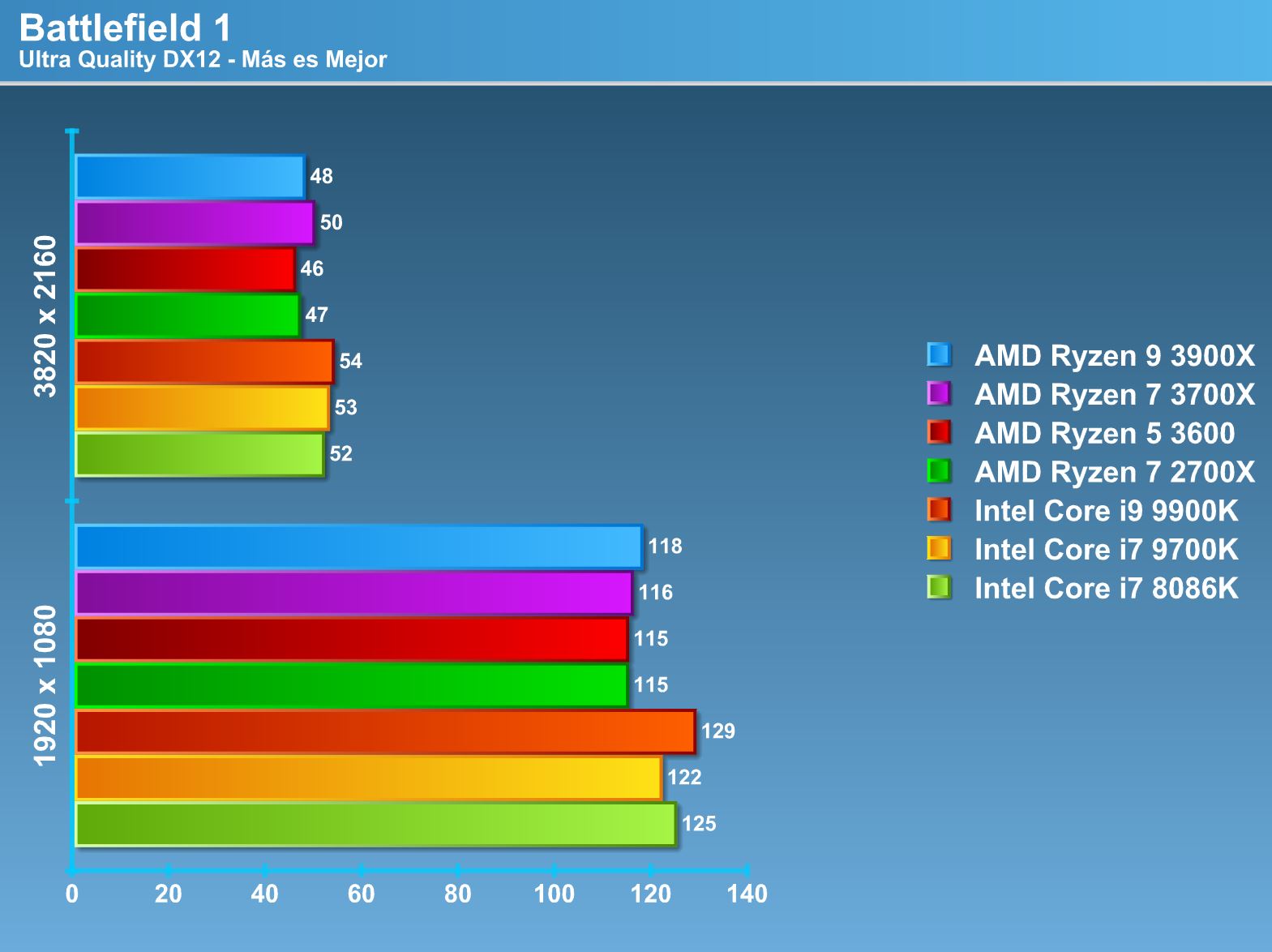
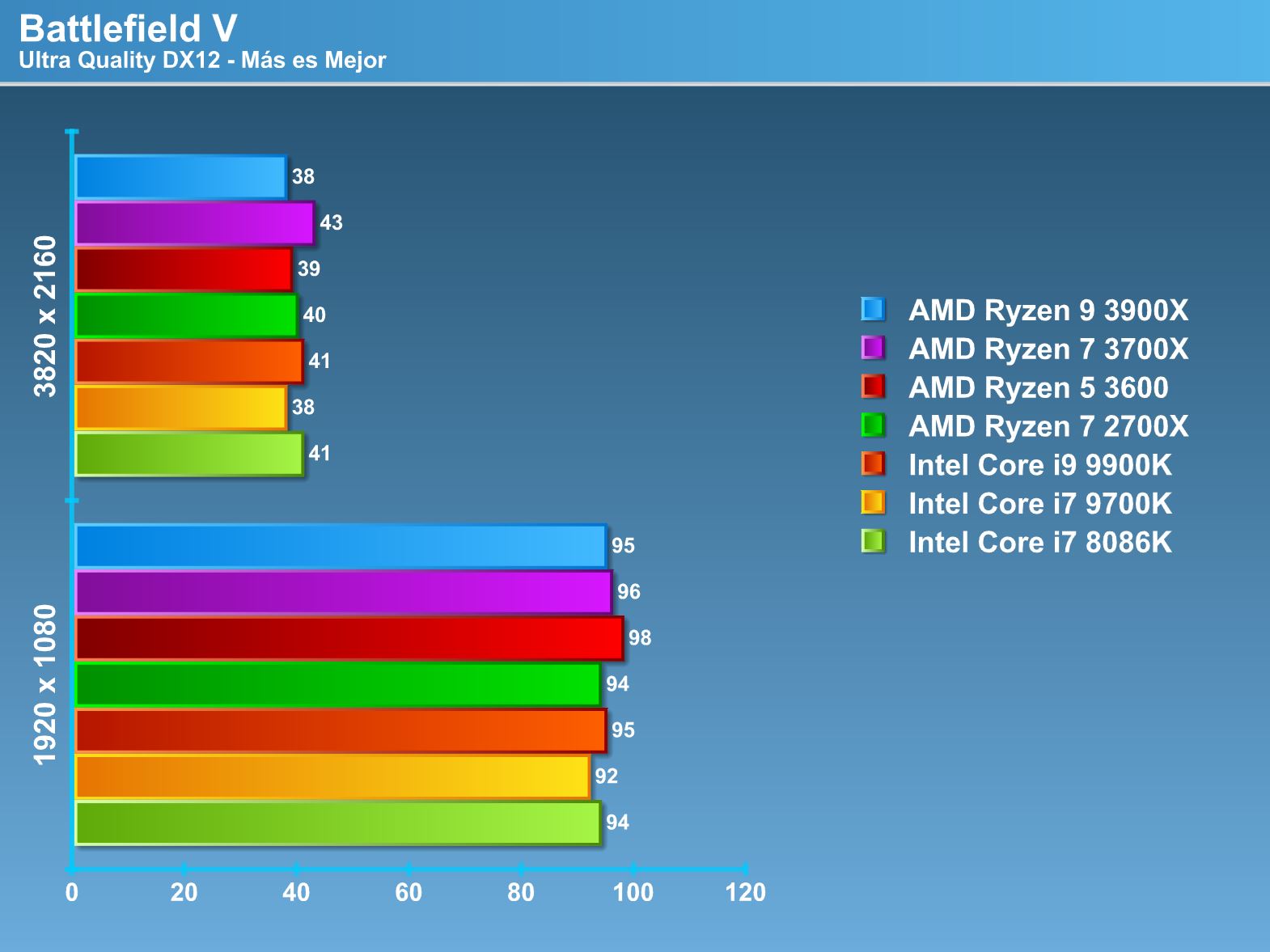
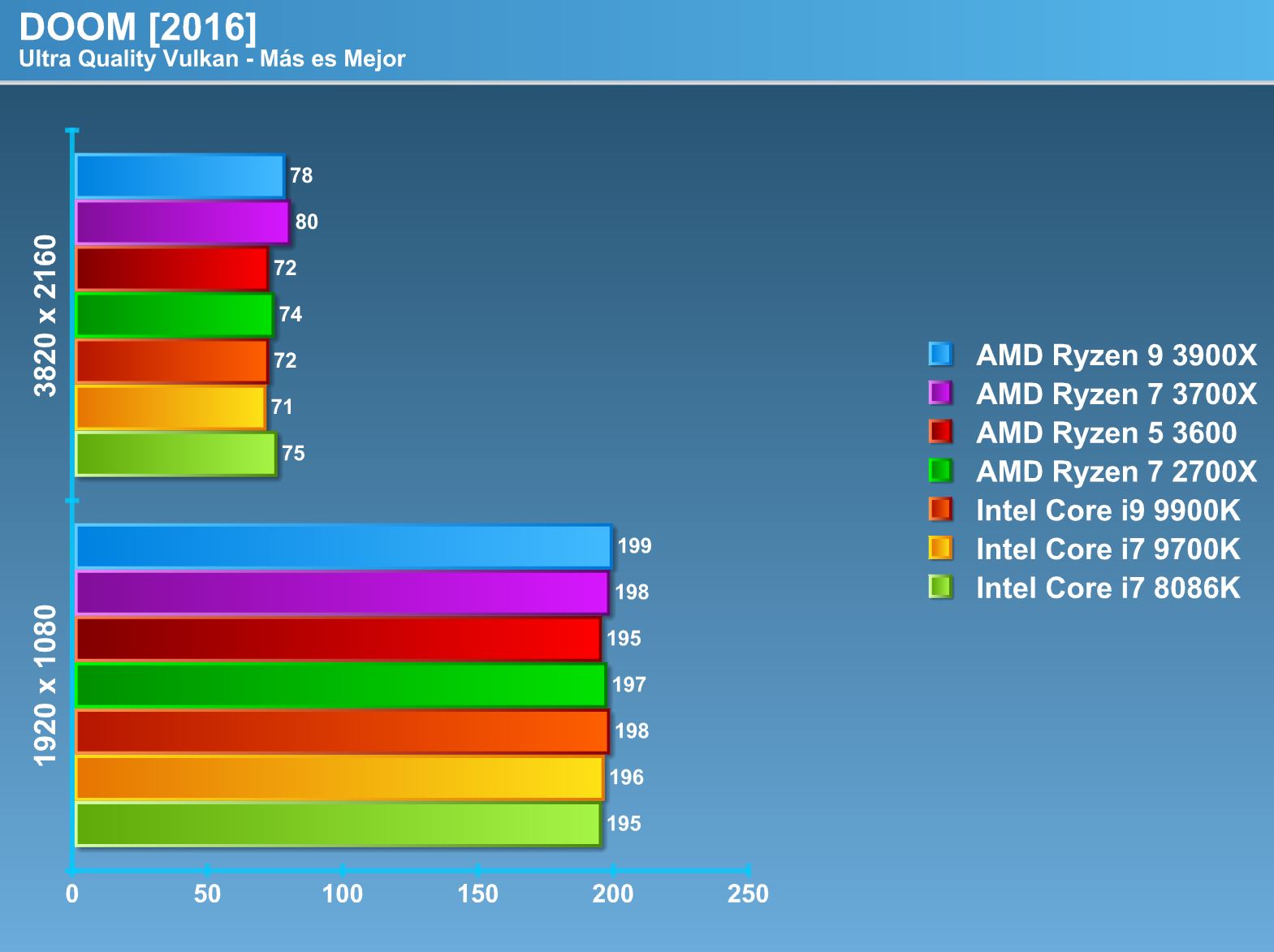
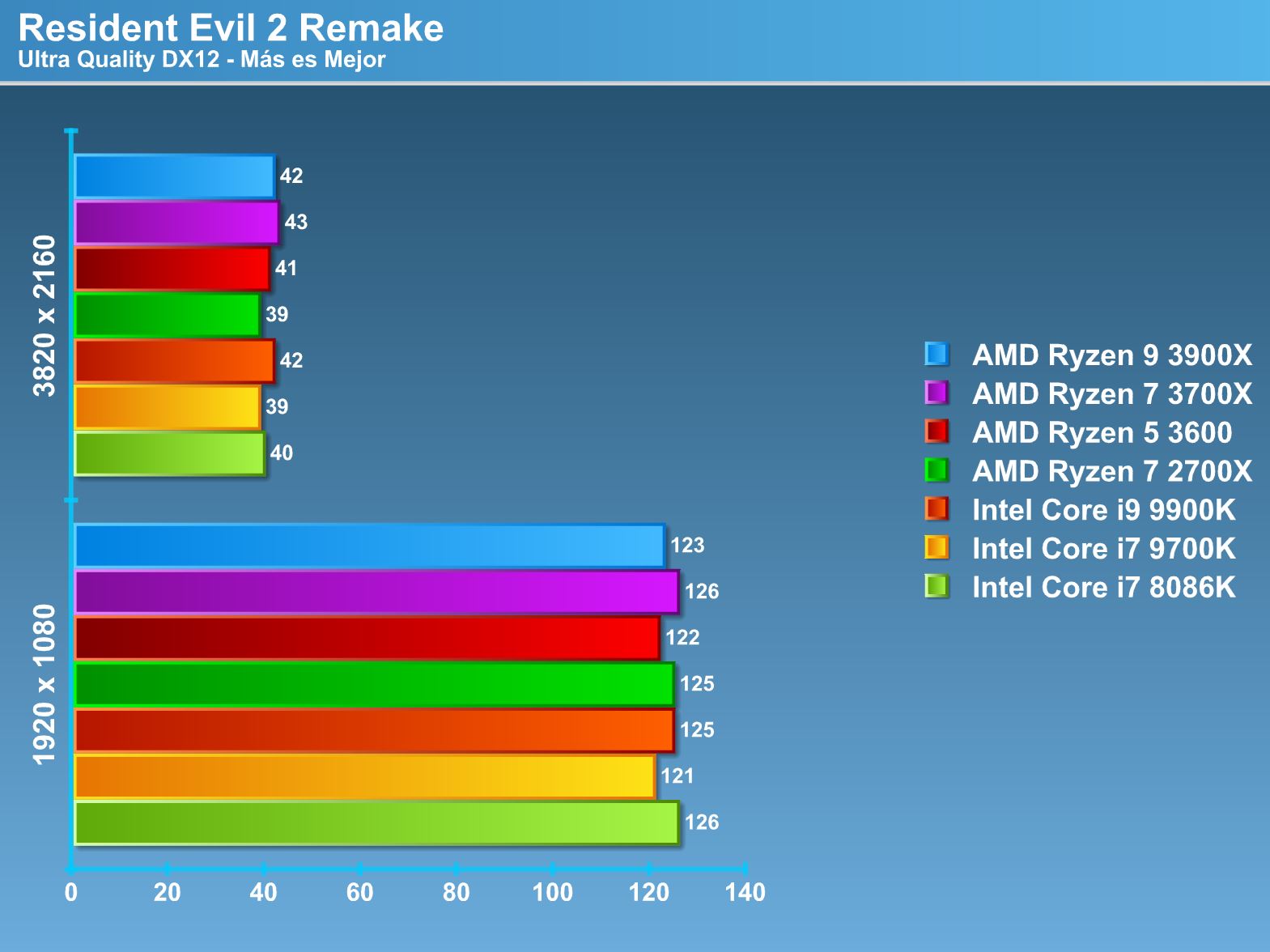

Consumption and temperature.
With the new change in the manufacturing process, this should be reflected to the customer delivering a direct benefit to what is consumption and temperature generation, in the following graphs we can see if the theory of these benefits really becomes effective.
To measure consumption and temperature, Linx was used to stress the CPUs, and CoreTemp + HwMonitor to monitor.
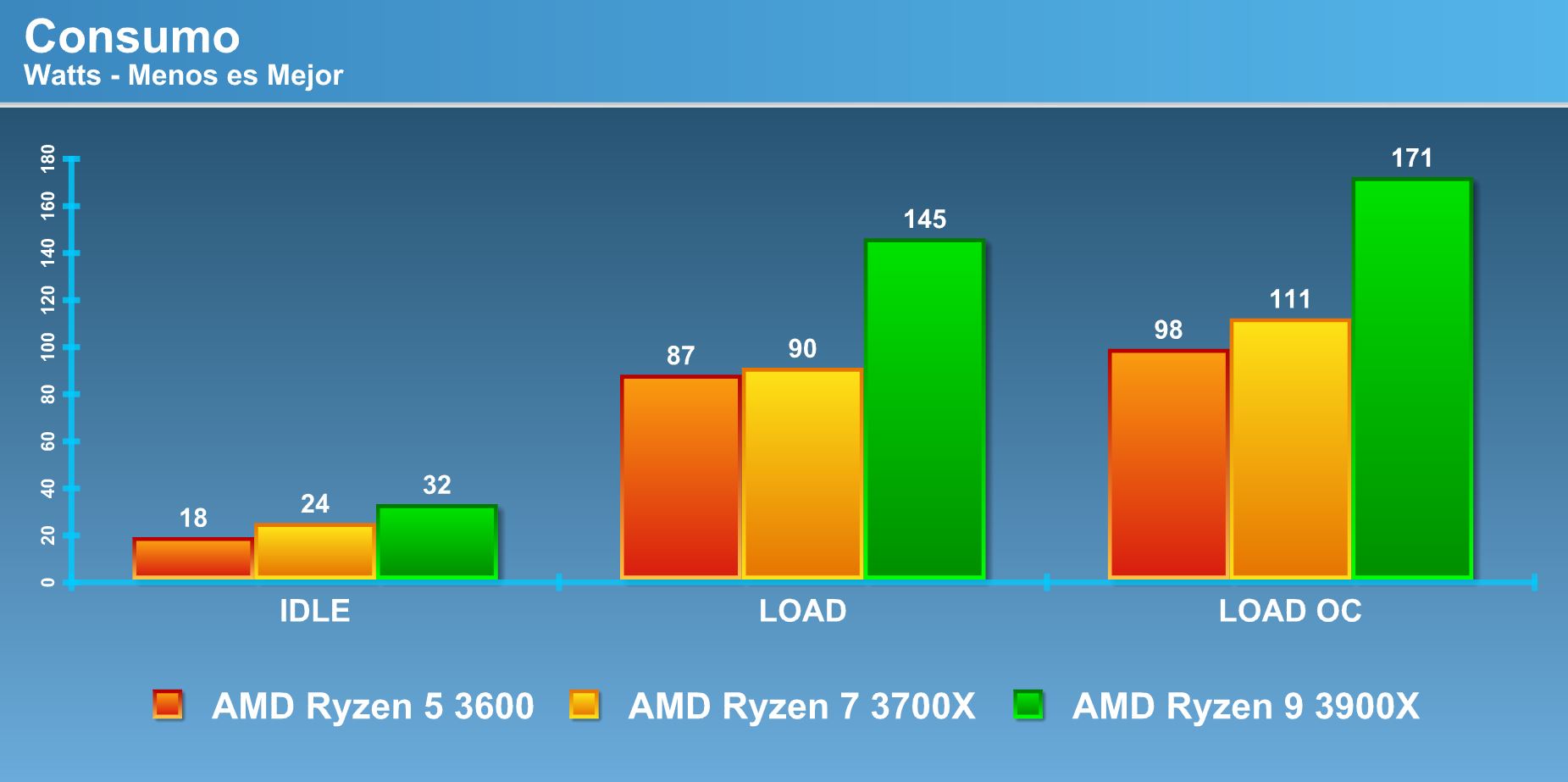
Regarding consumption, only the R9 3900X escapes from others and on its declared TDP.
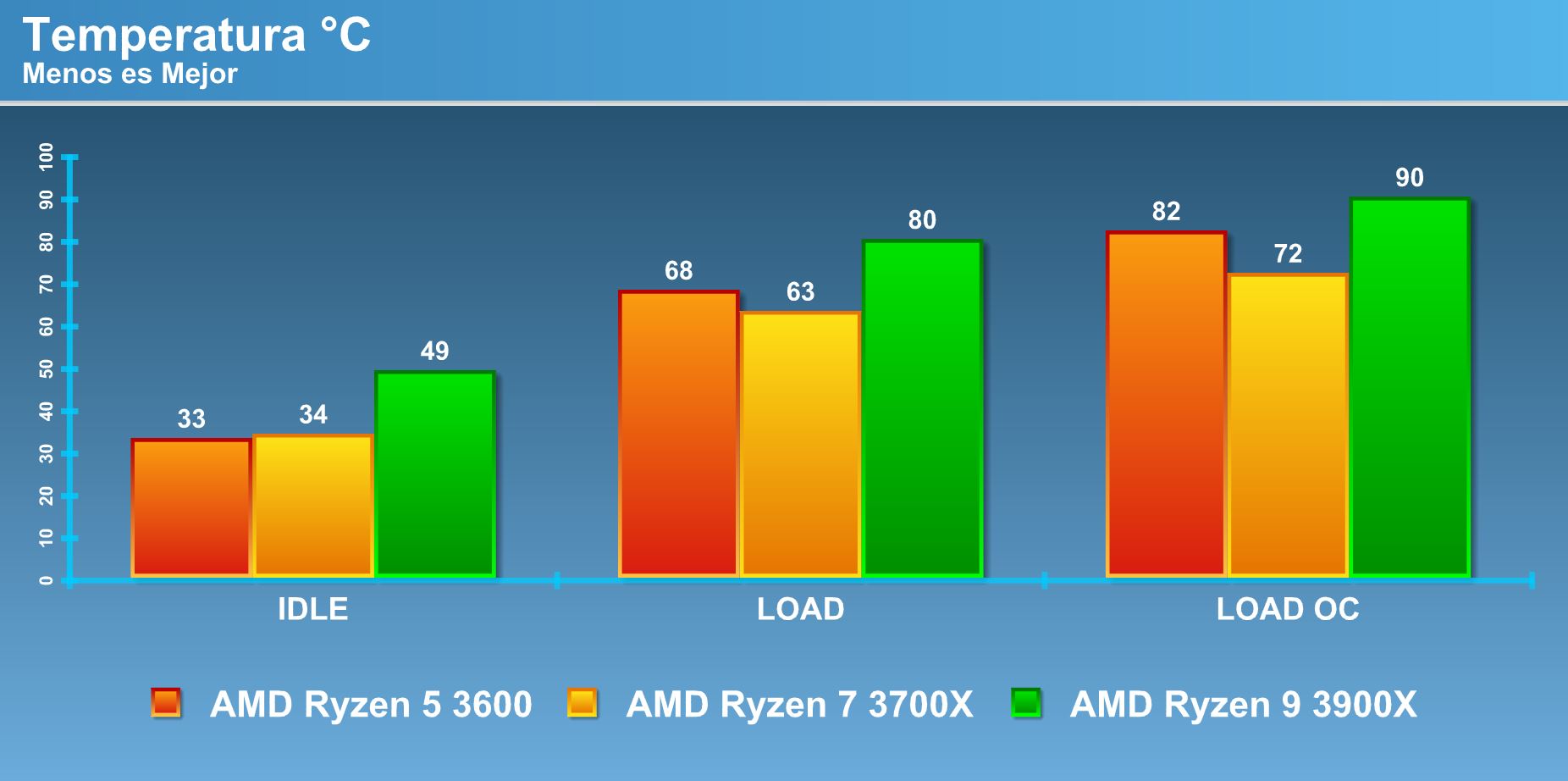
Regarding the temperatures, we see how the Cooler “Stock” does a good job, but again the 12 cores and 24 threads of the R9 3900X do their thing, raising the temperature to dangerous 80ºC. When we apply overclock, it is necessary to look the other way and look for a cooler of better performance.
PCIe 4.0
Another point that AMD refers to with these new processors is the inclusion and support for the new PCI Express standard. Where quietly the bandwidth is doubled over the current PCIe 3.0. But will we really see a real change?
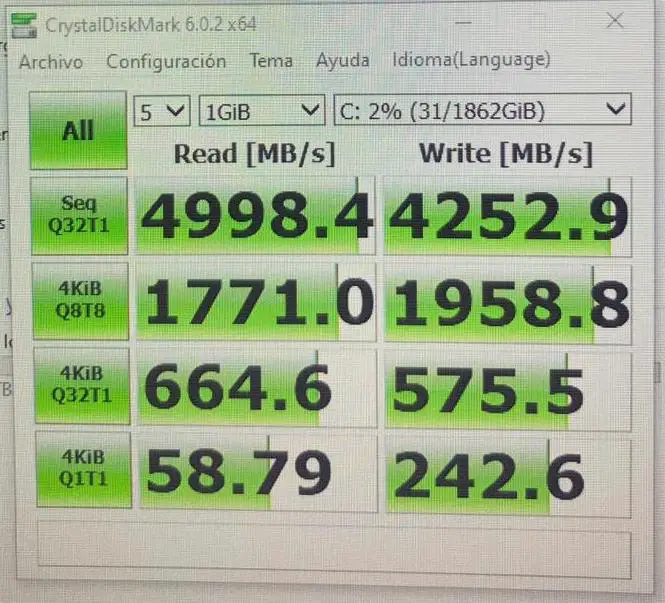
A test performed on an NVMe PCIe 4.0 SSD, gives us the result above, clearly not the top of the technology, as it is limited by the controller (Phison PS5016-E16). Well, in the day to day, a big change will not be noticed, what we will notice is when working with very large files, or when we are transferring a giant amount of information.
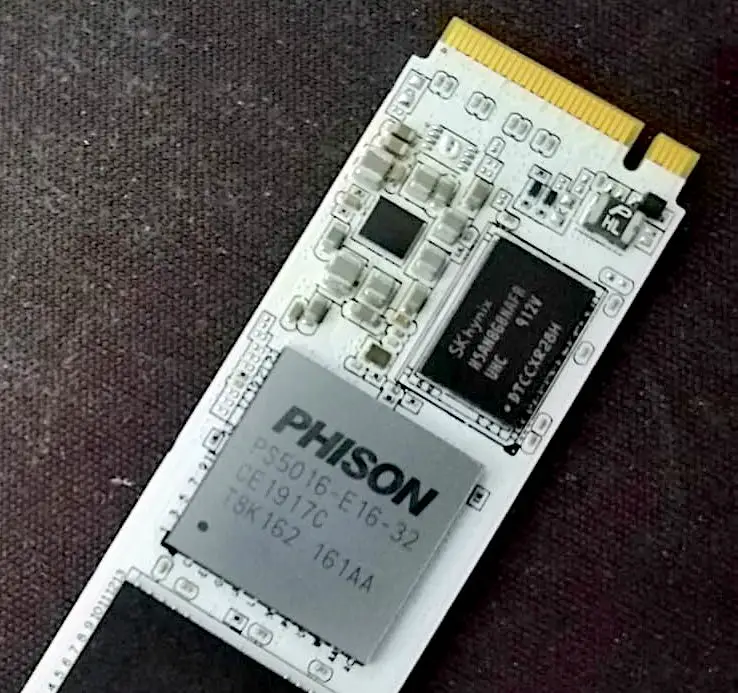
The NVMe PCIe 4.0 SSDs that will go on sale today, or within the next few weeks, will all have the same controller, as it is the only one available at the moment. So its performance will be very similar to that shown.
Overclocking.
As it has happened with previous generations, reaching an increase in performance through a manual overclocking, in AMD Ryzen it is somewhat limited, basically because they already come at a frequency quite close to what the processor could develop, so limiting As temperature prevents us from increasing the frequency further through conventional refrigeration solutions, however, not all cores manage to develop maximum frequency in XFR technology. After the comments, it was decided to leave the frequency for all the cores in 4.2 GHz with a Voltage of 1.4V, in the 3 processors and it resulted in the following.
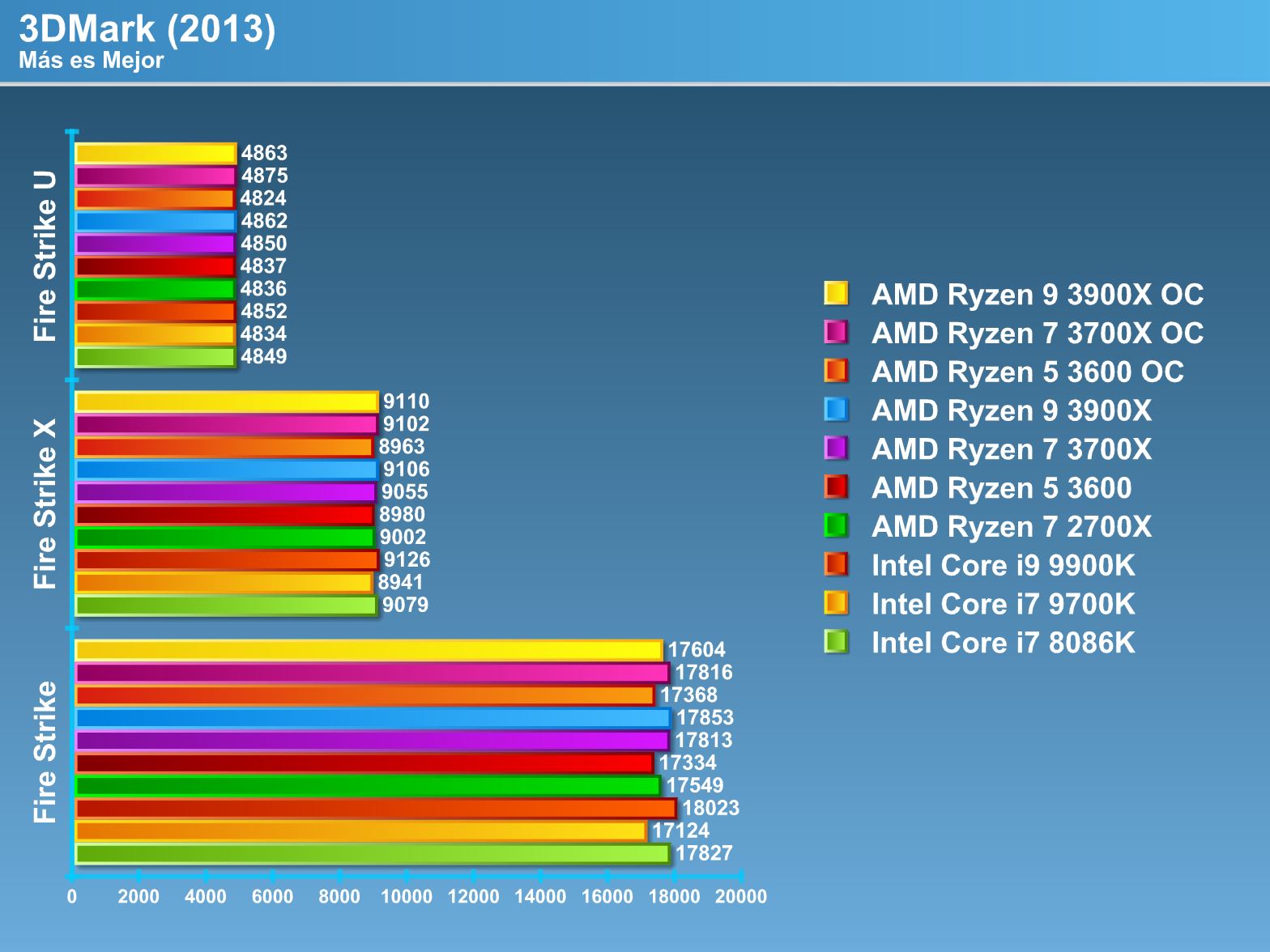
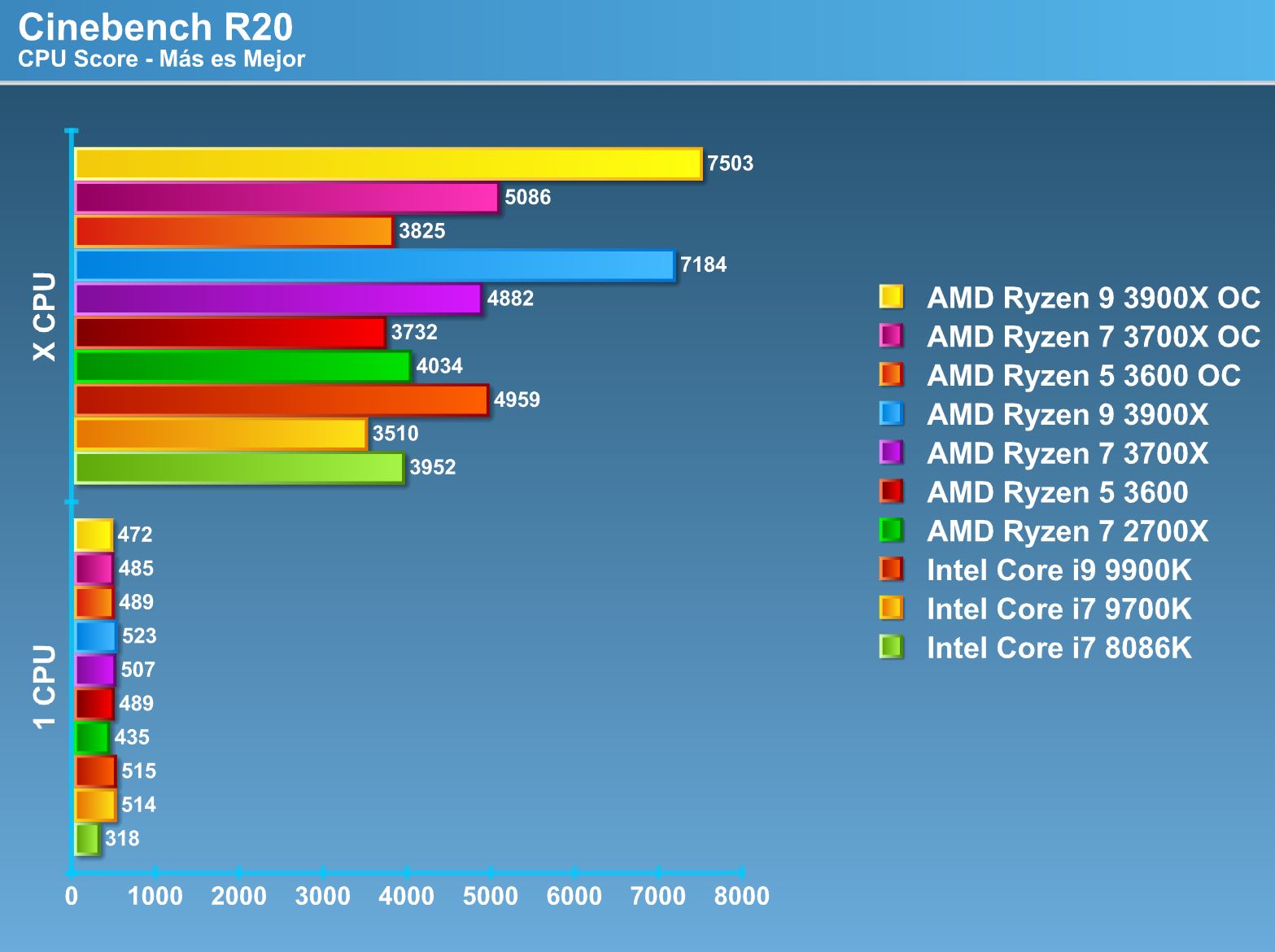
As you can see, there was a slight improvement with respect to the values that one can obtain with the default processors, and it is clearly that with the Cooler Stock it is not possible to achieve a good level of OC. As mentioned in the temperature section, since peaks of 80ºC and 90ºC were reached when we applied some OC.
Conclusion.
The technological leap that AMD delivers with this new generation is enormous, clearly leaving behind the main factors that previous generations failed to completely overcome, this is performance in games and support of high-frequency memories.
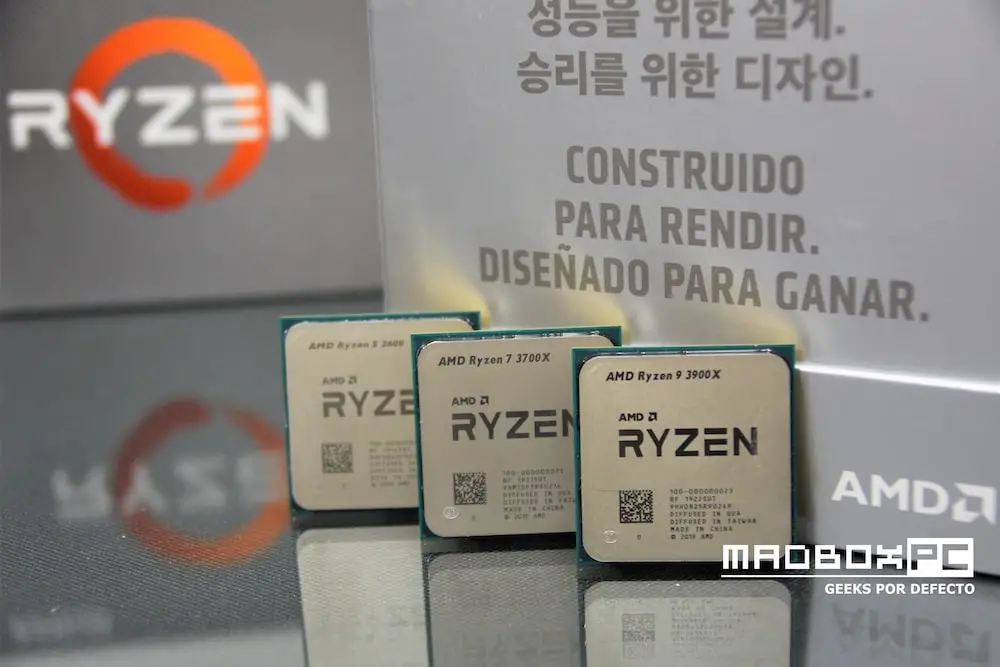
In the 3 processors that we have had the possibility to review, it is concluded that AMD is really generating a real change in how we have been seeing the processor industry, clearly the prices and performance that AMD delivers gives a 180º turn to everything what was previously seen, and leaves the competition very badly stopped, which we have undoubtedly seen as desperately trying to respond basically with the only thing left, lower their prices.
In general terms AMD takes advantage and takes the crown, more cores and threads, benefit multitasking work significantly, if this we add a lower purchase cost, the balance would tip to the green side. In any case, it should be noted that when we talk about pure power, Intel still has a point in favor here, although with Zen2, the gap narrowed significantly.
AMD must continue working to improve the temperature, especially now that the number of cores are being increased under the same piece of silicon, this we could see in the numbers of the R9 3900X. It is appreciated that a cooler of good performance is incorporated, but if someone wants to get even more performance, it becomes necessary and highly recommended, to change that cooler for another one of better performance, or for one based on liquid cooling.
Many know that a real competition between the 2 big manufacturers of processors, benefits us all both for the prices as well as the tireless need to have the best product, leading the rival to develop technologies that without the pressure would probably take some years to launch .














